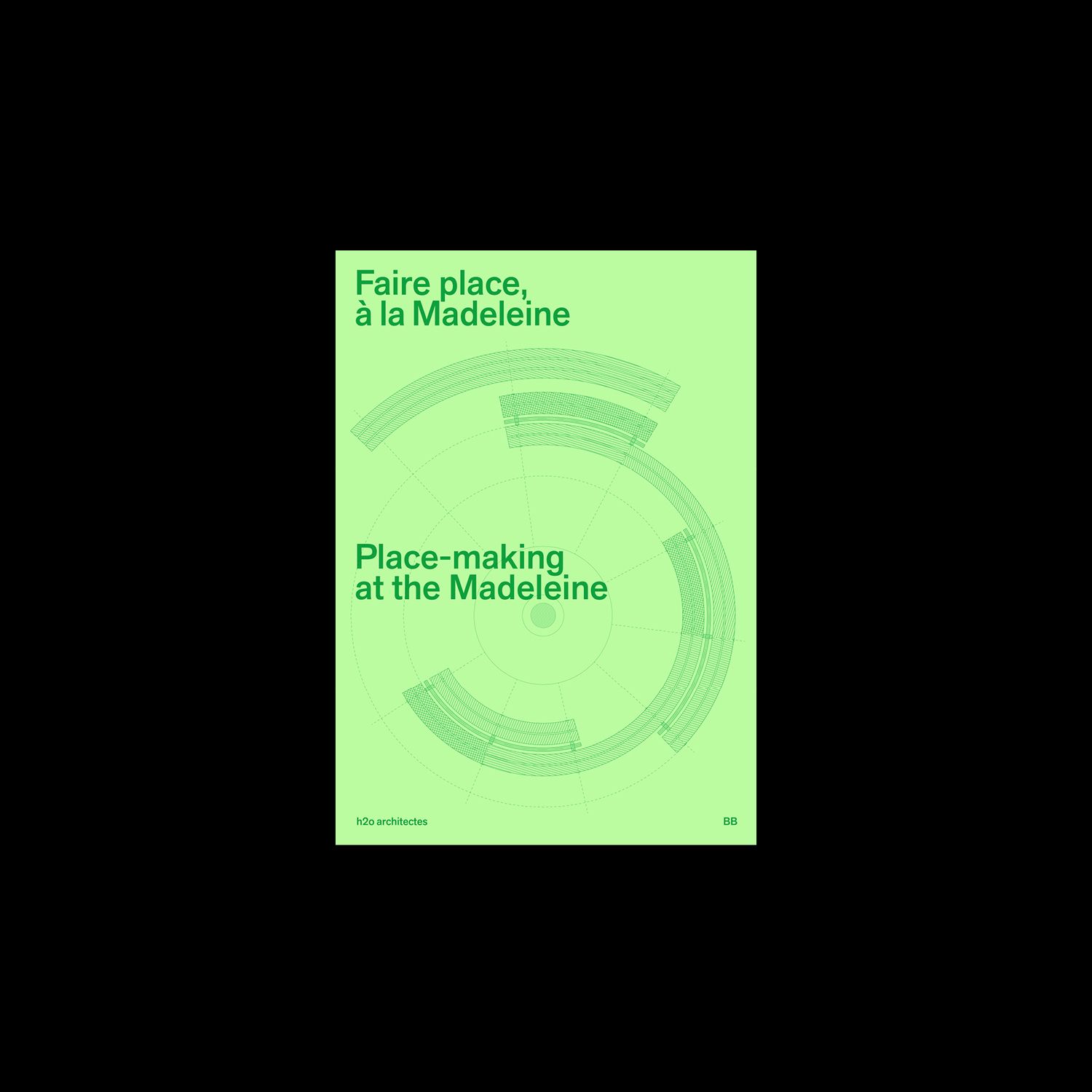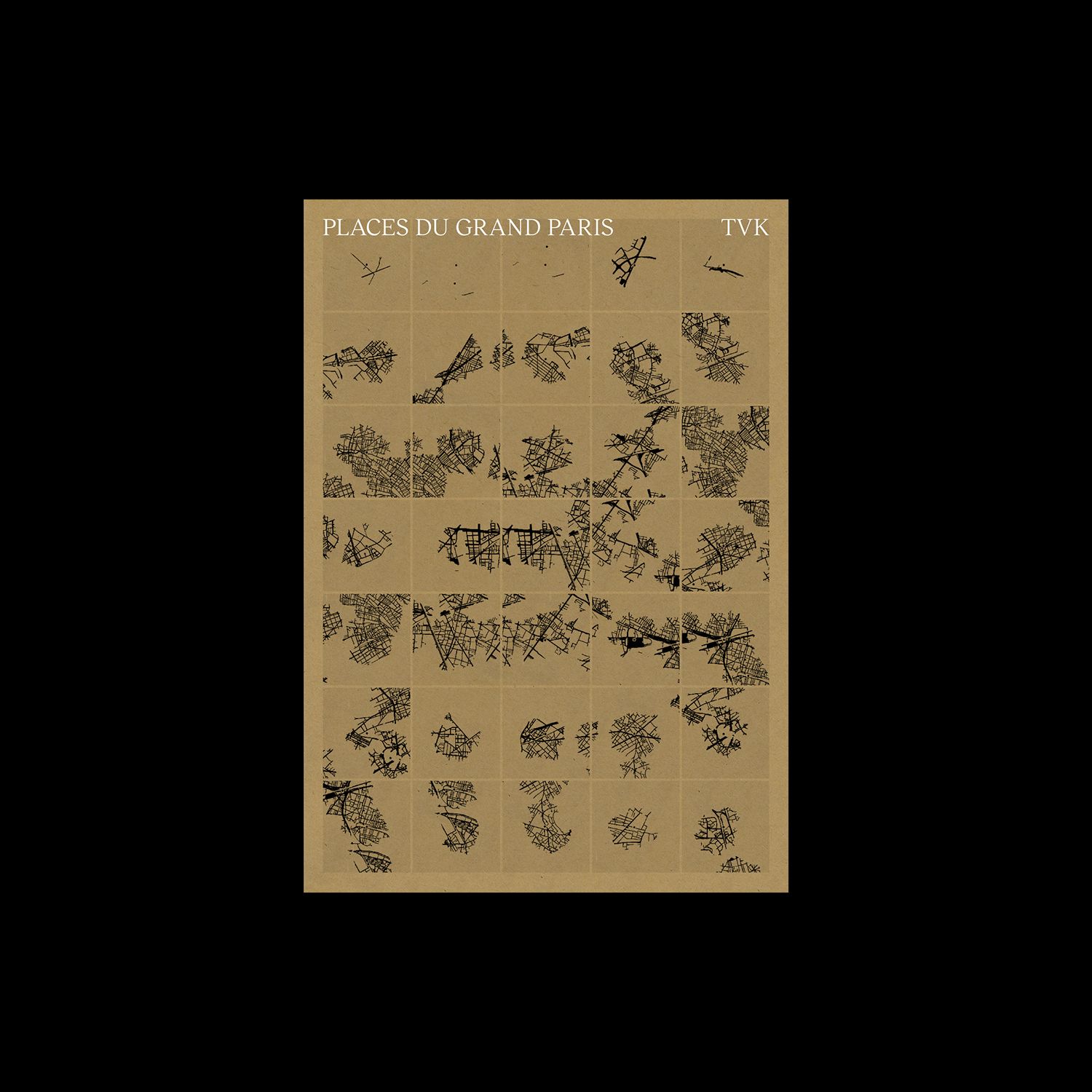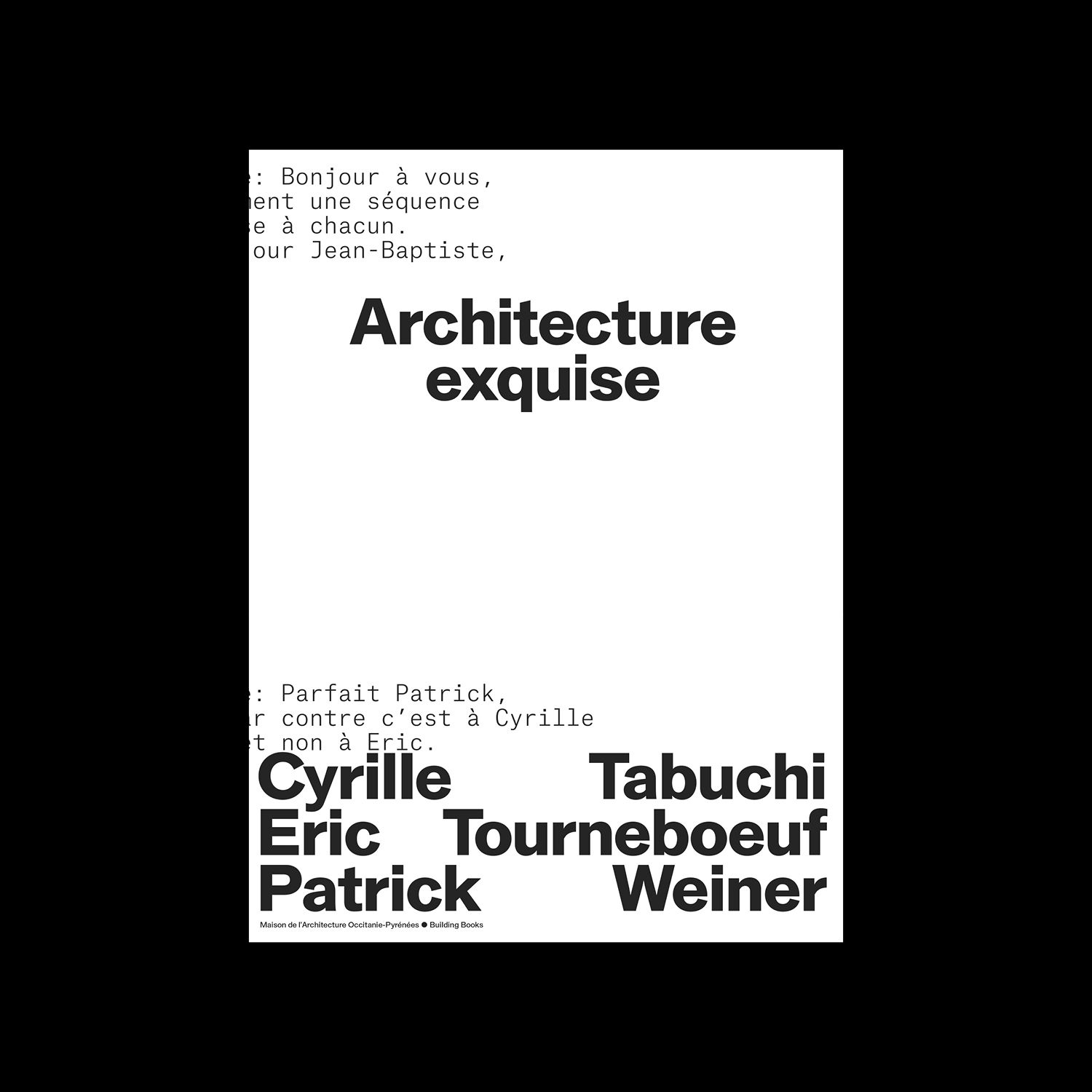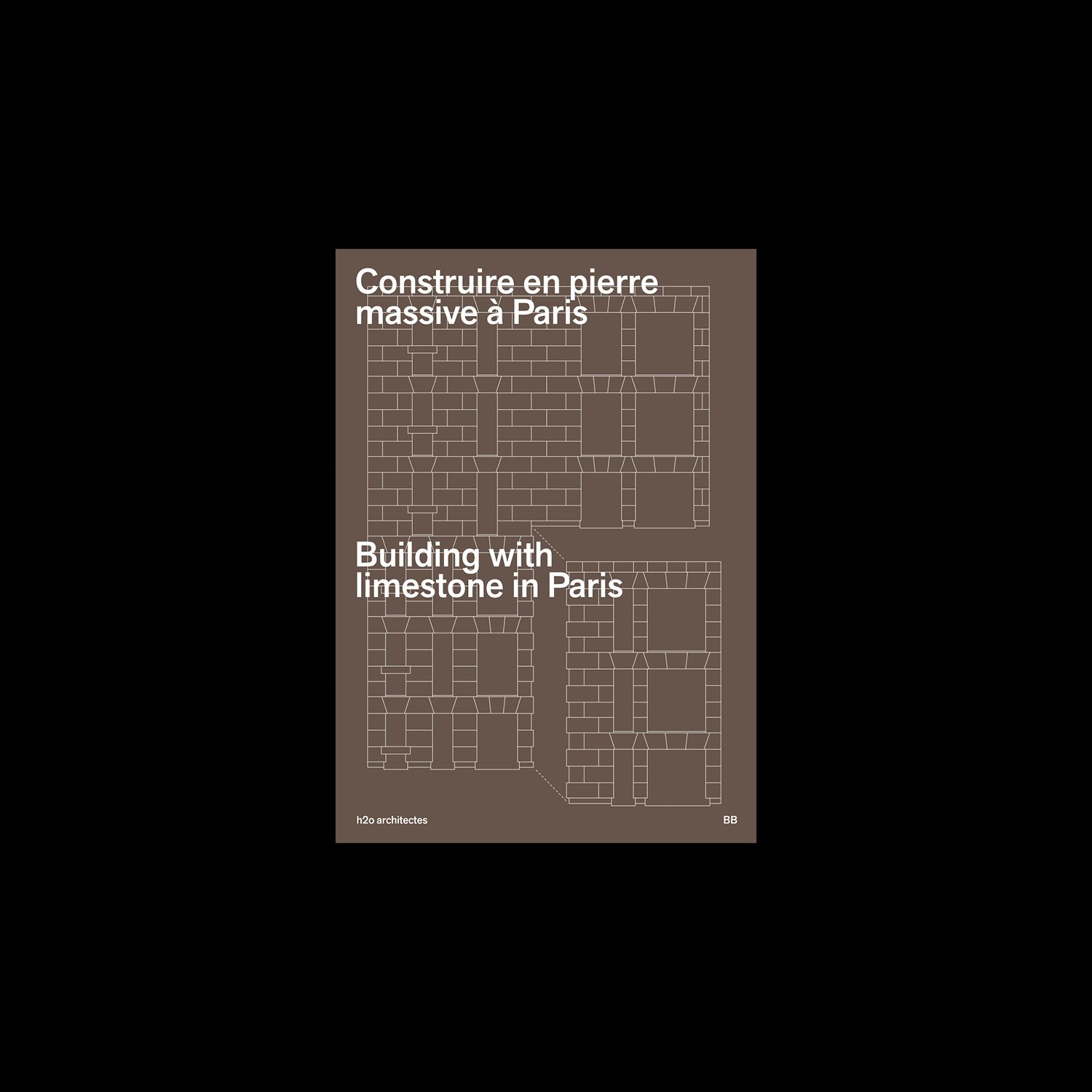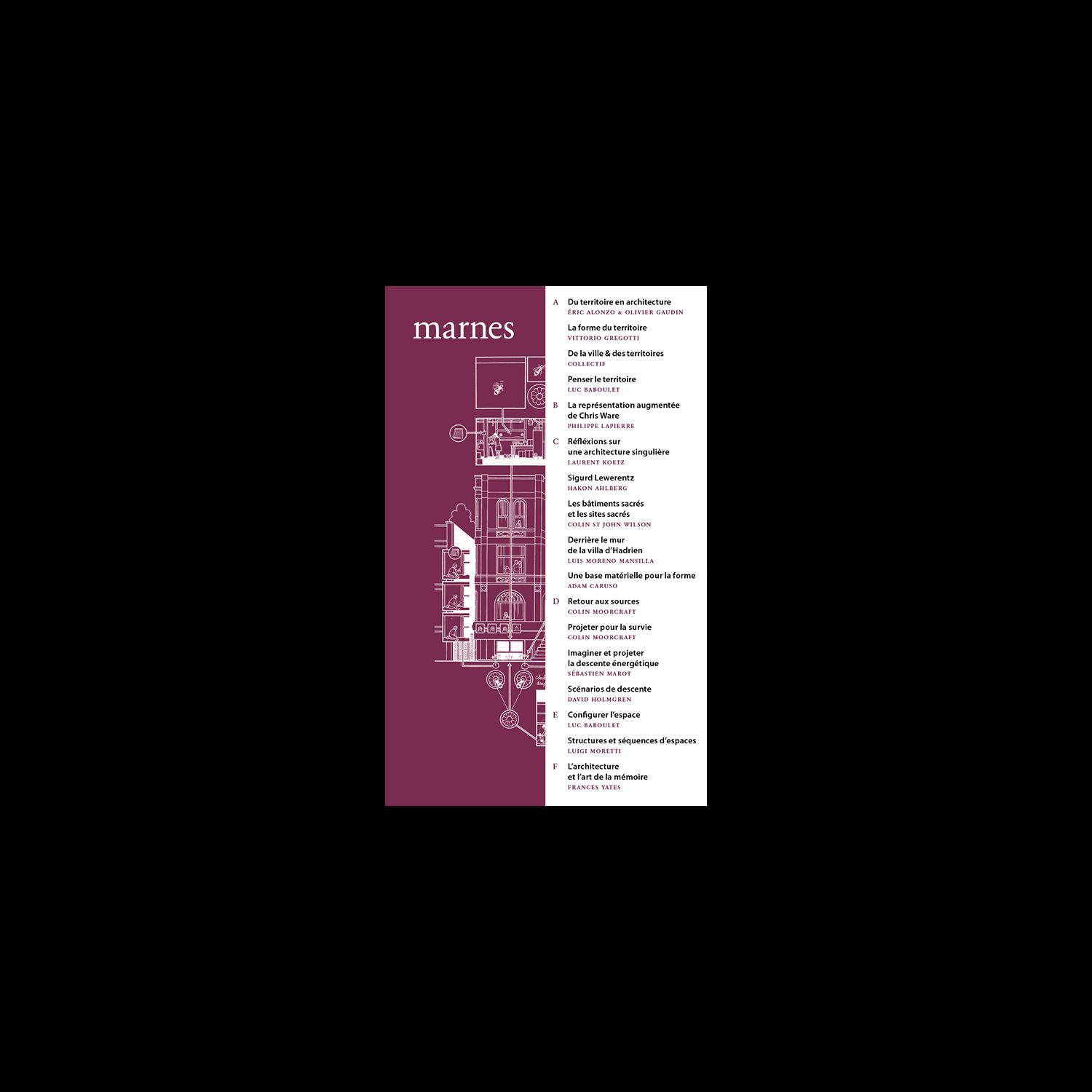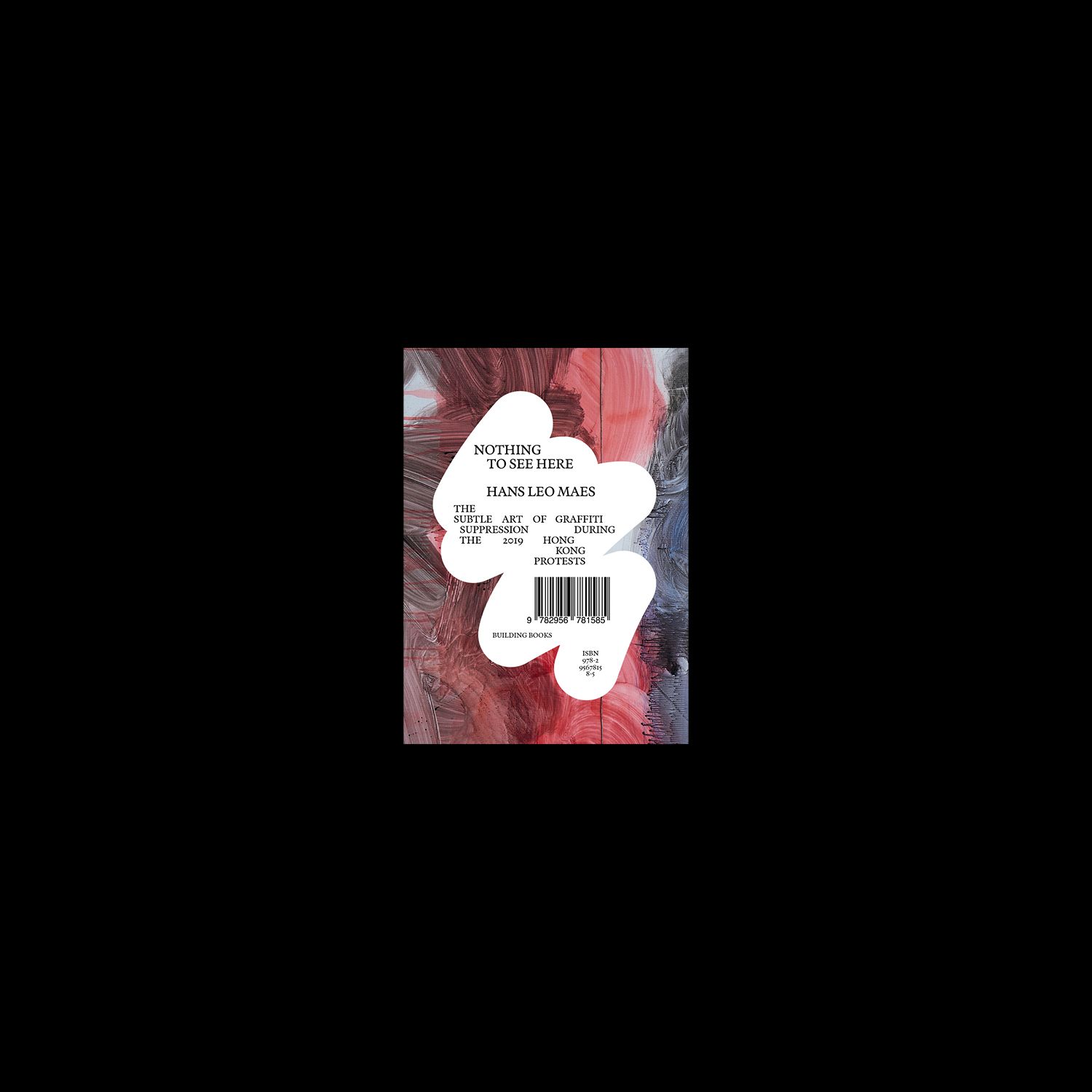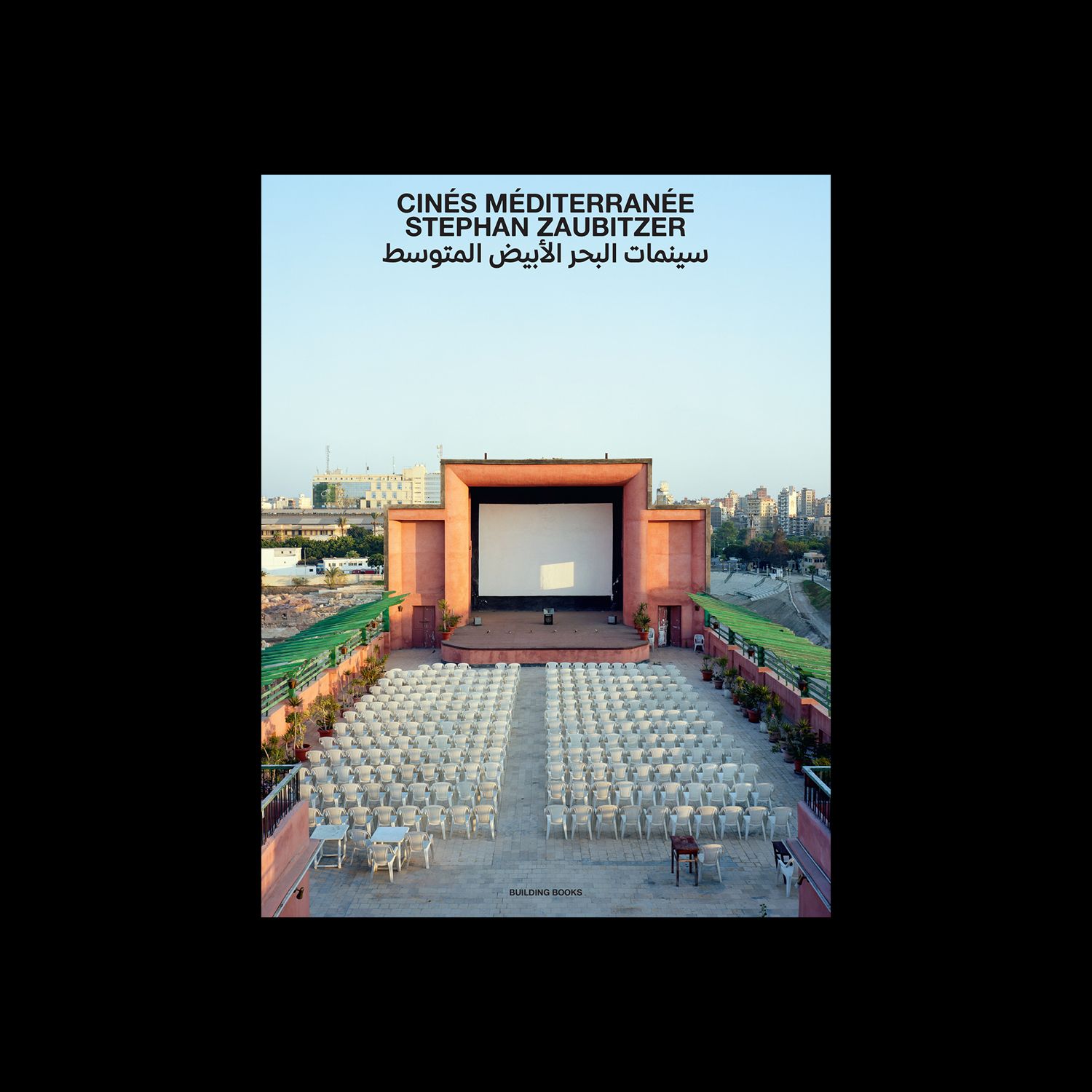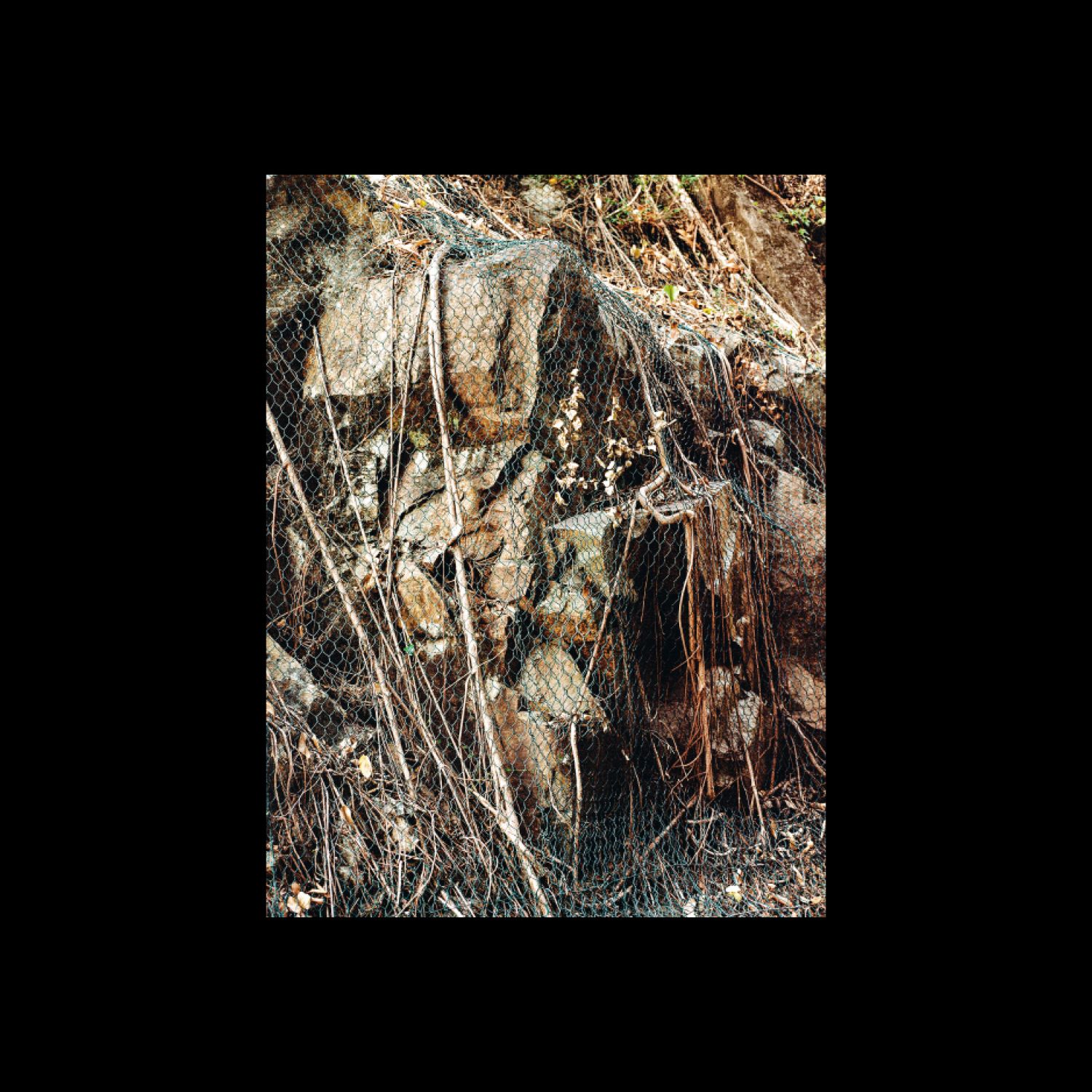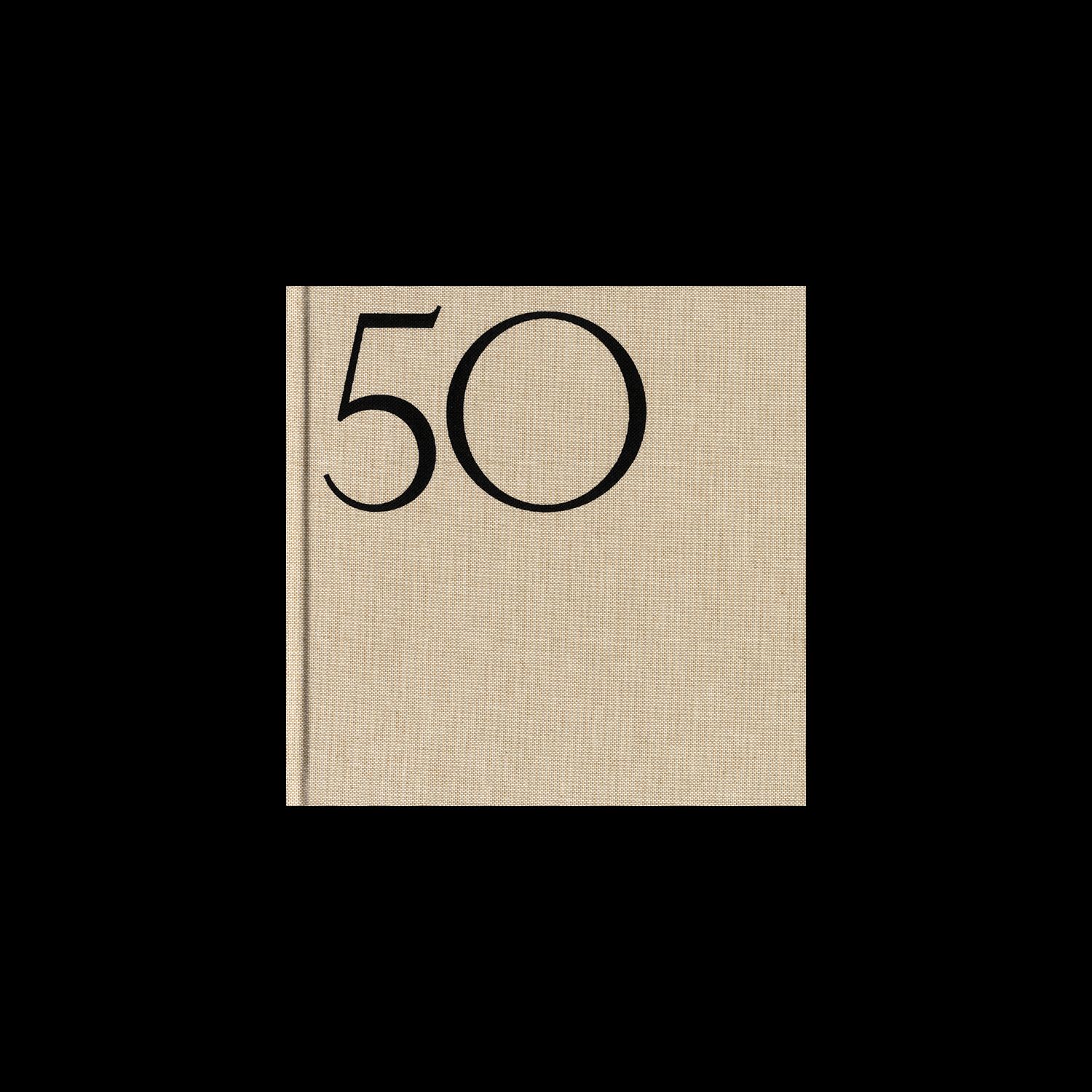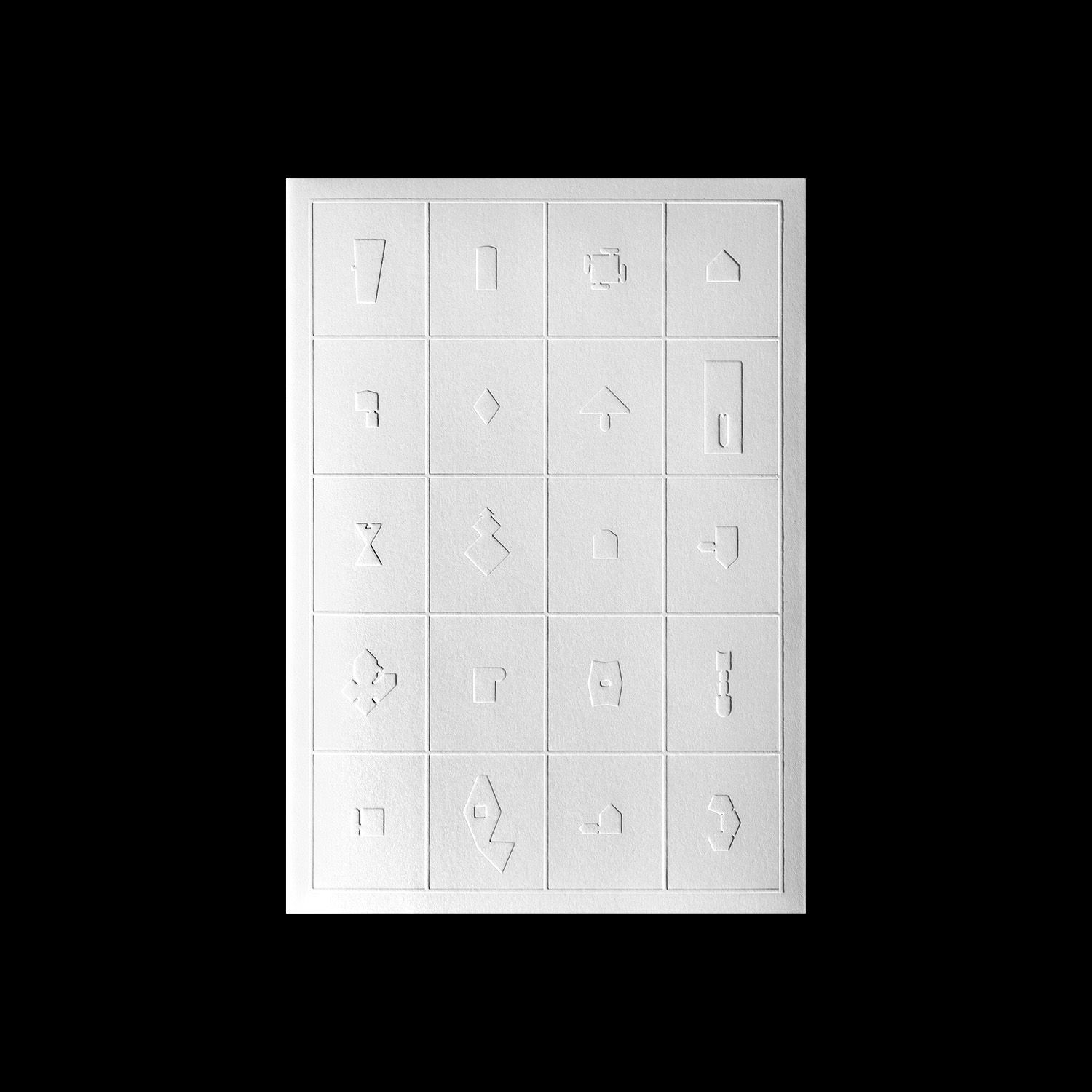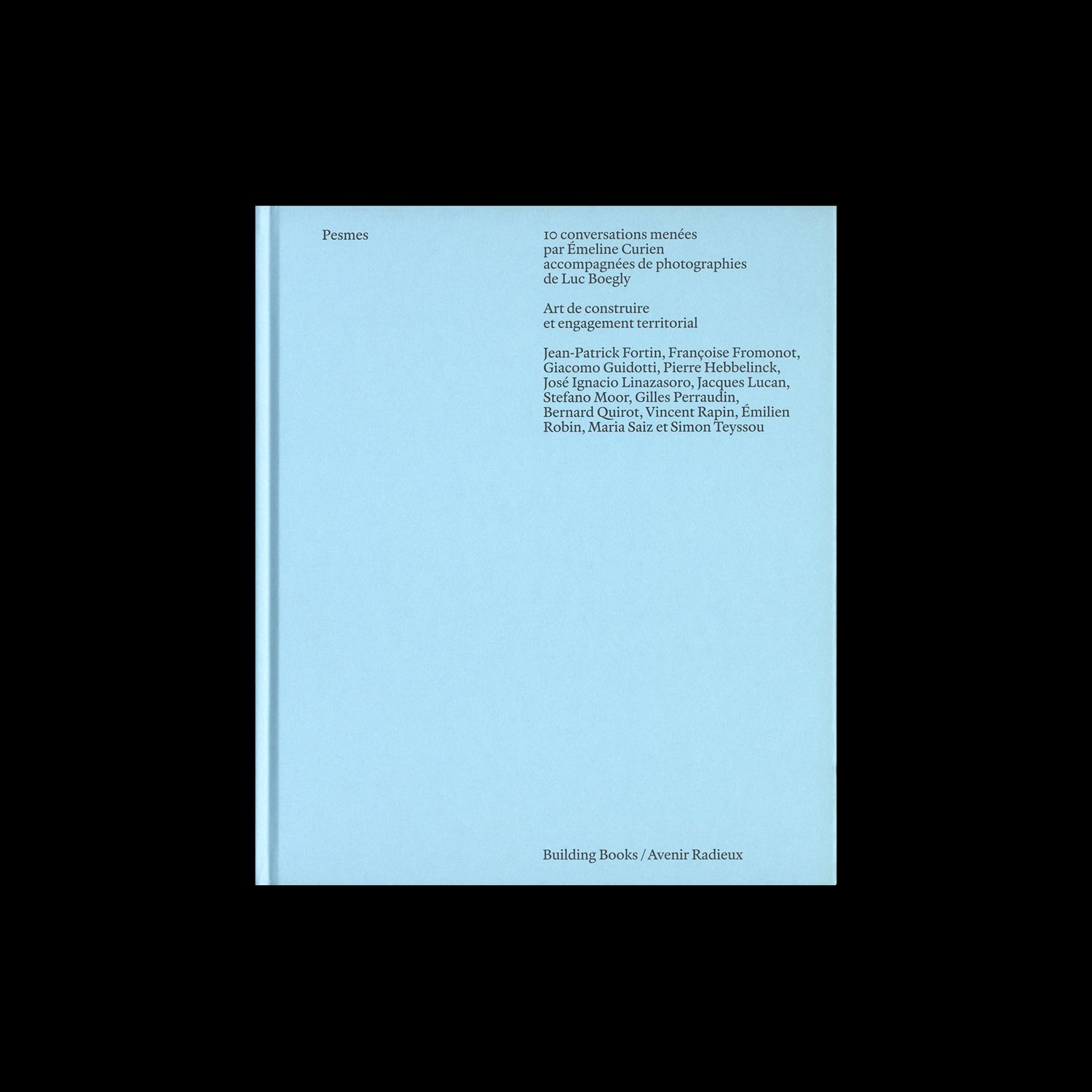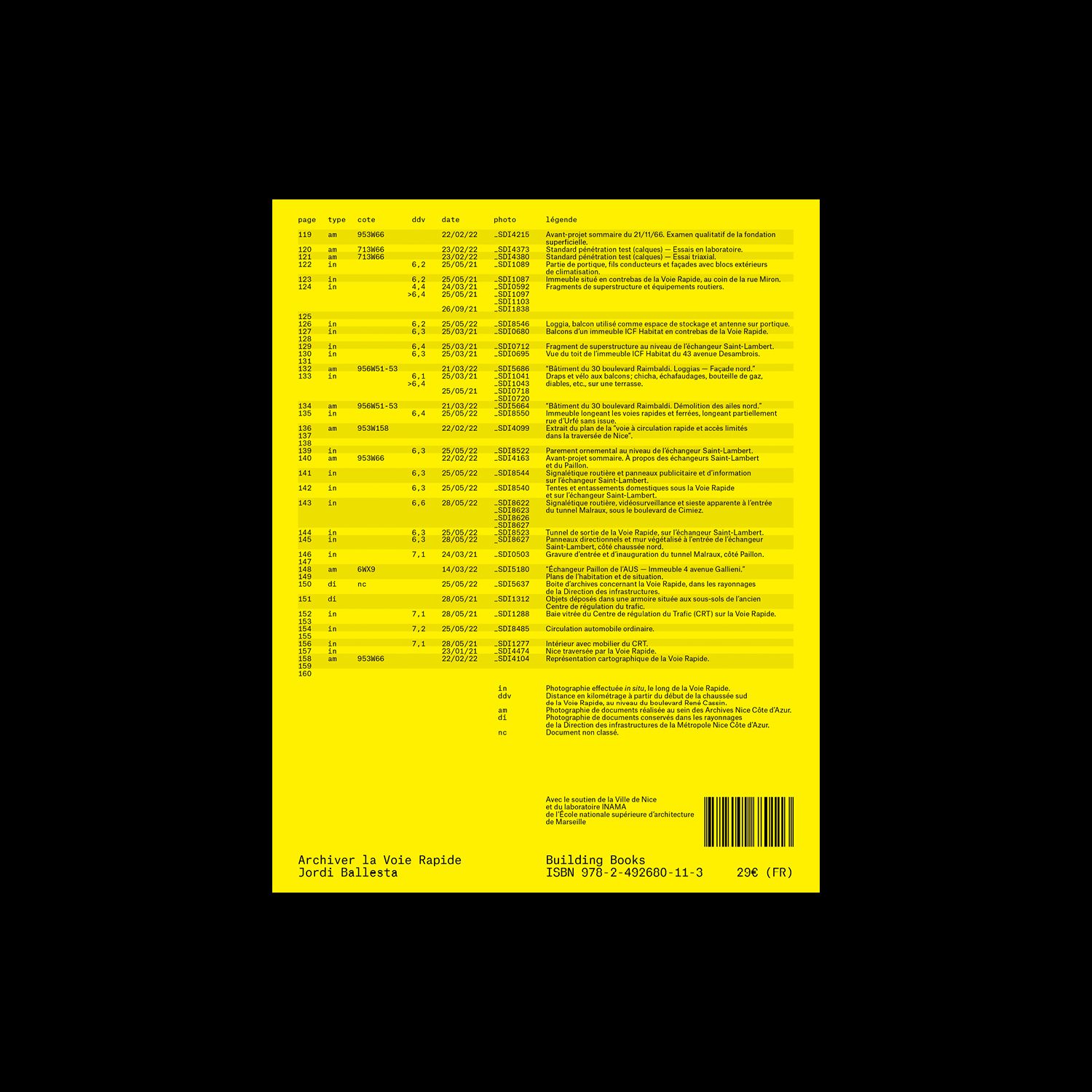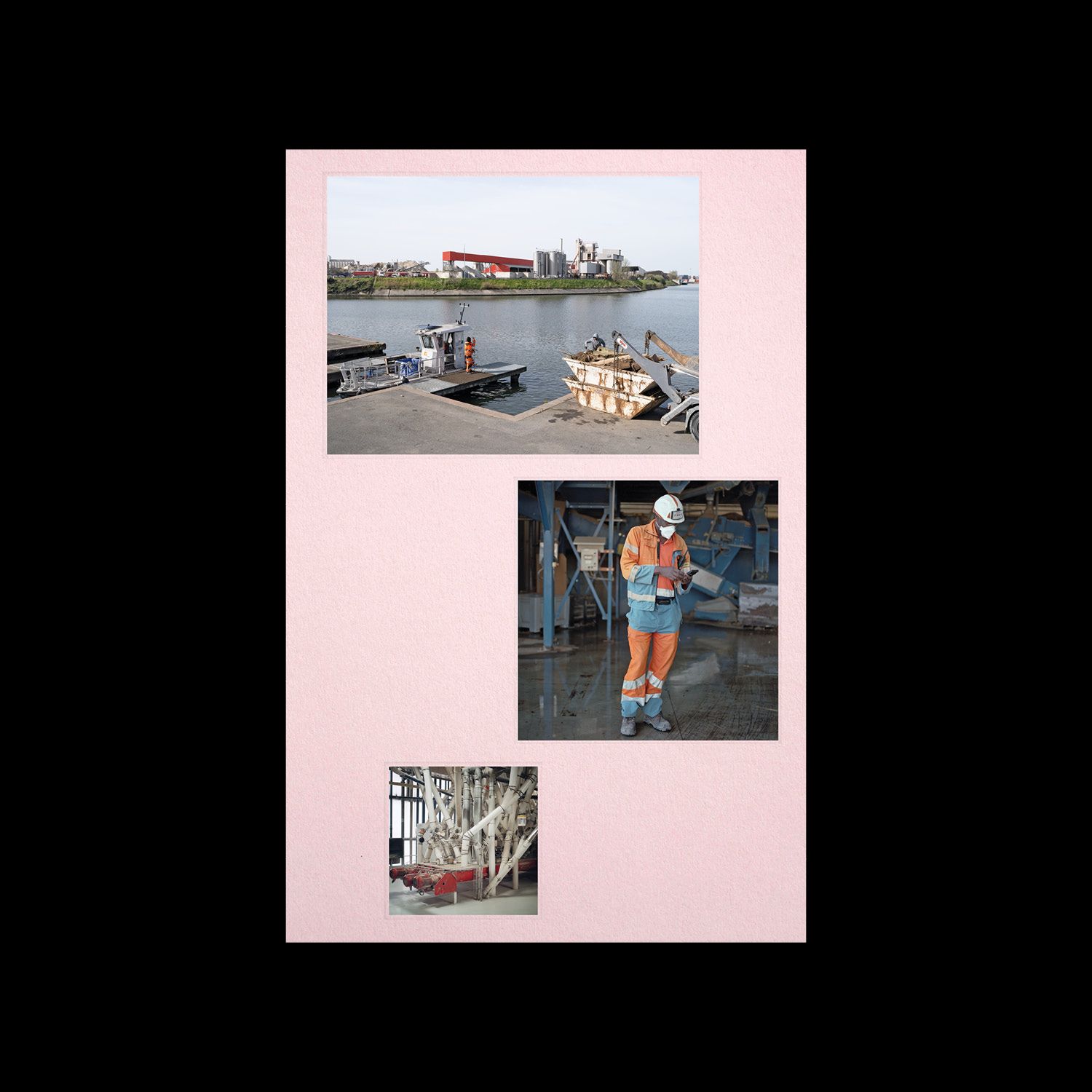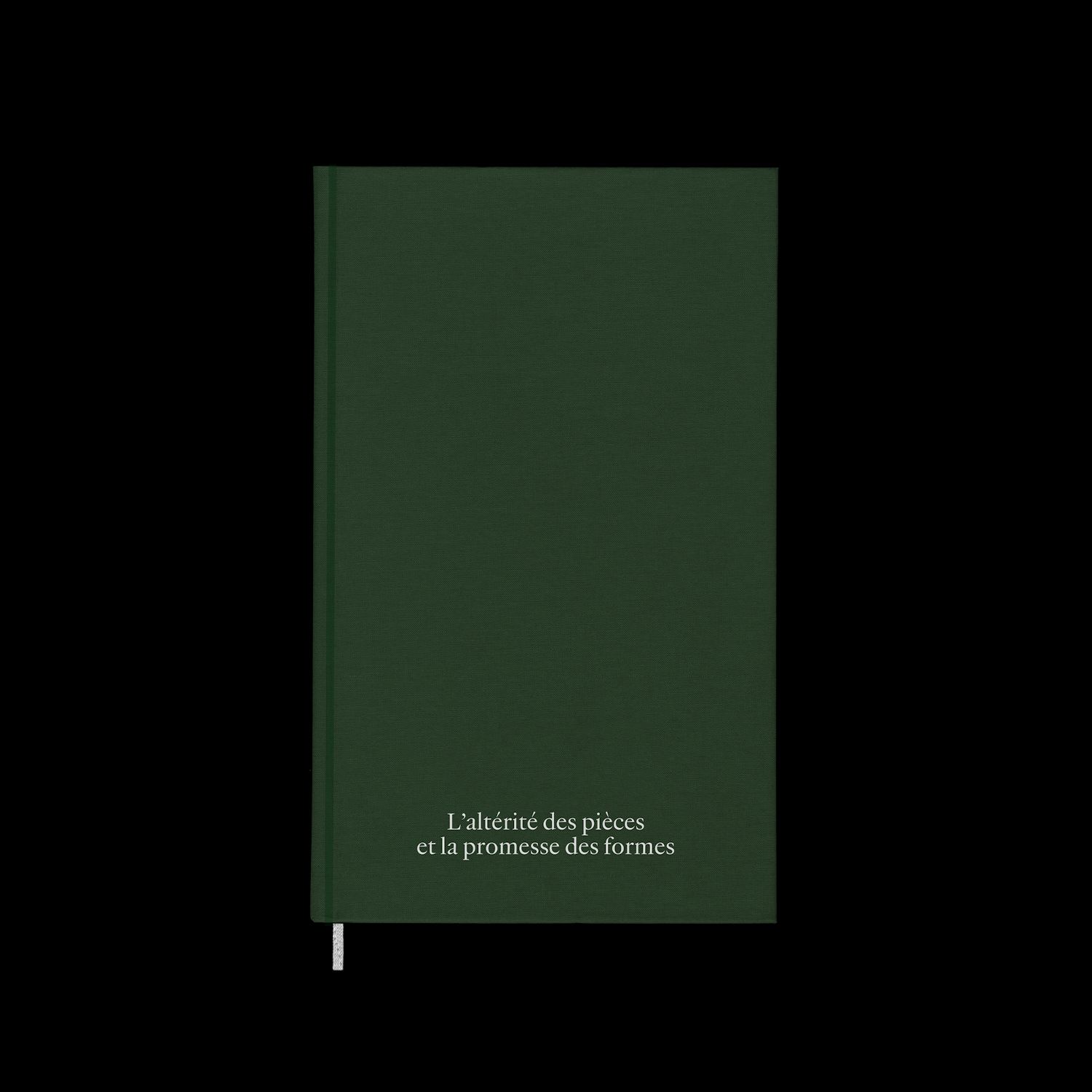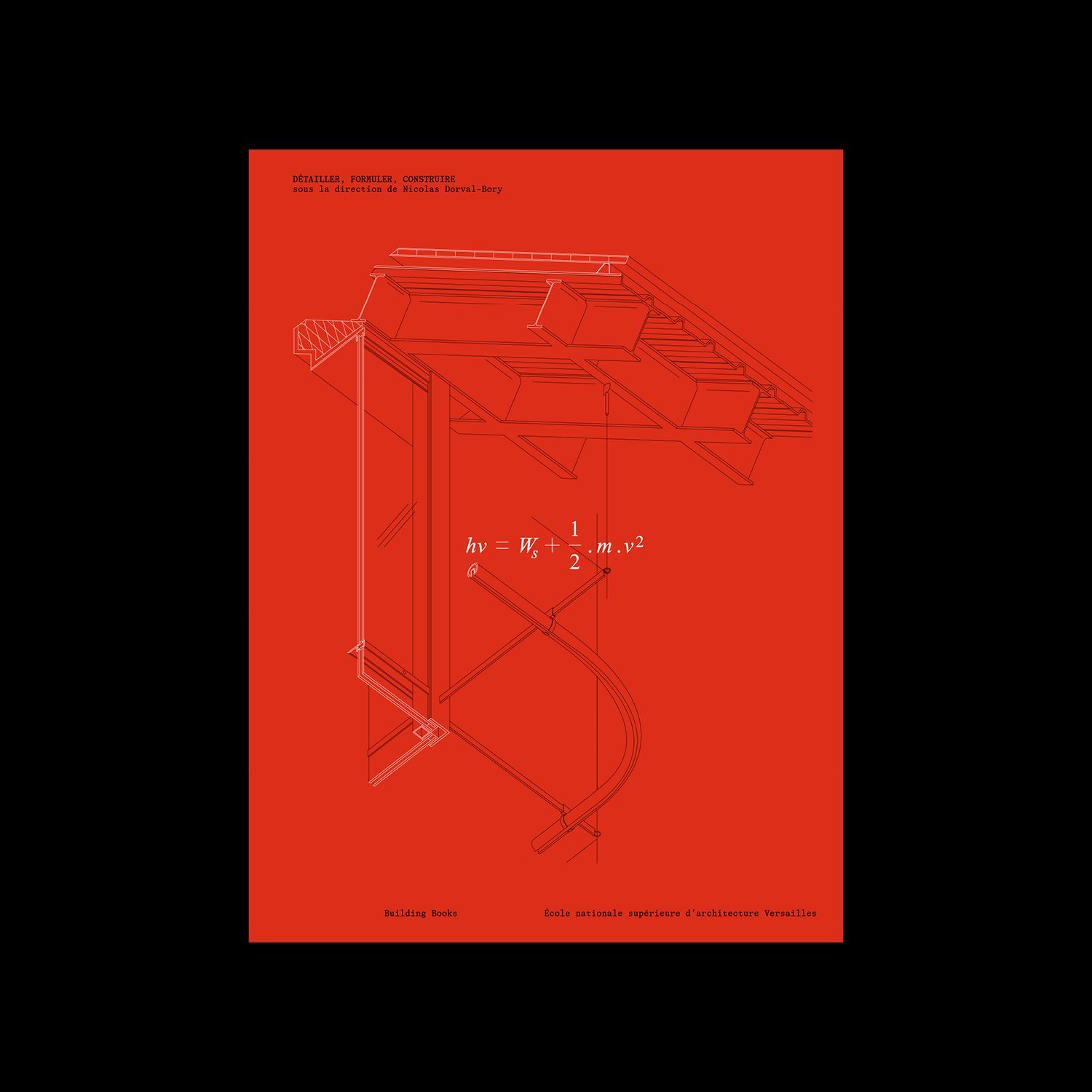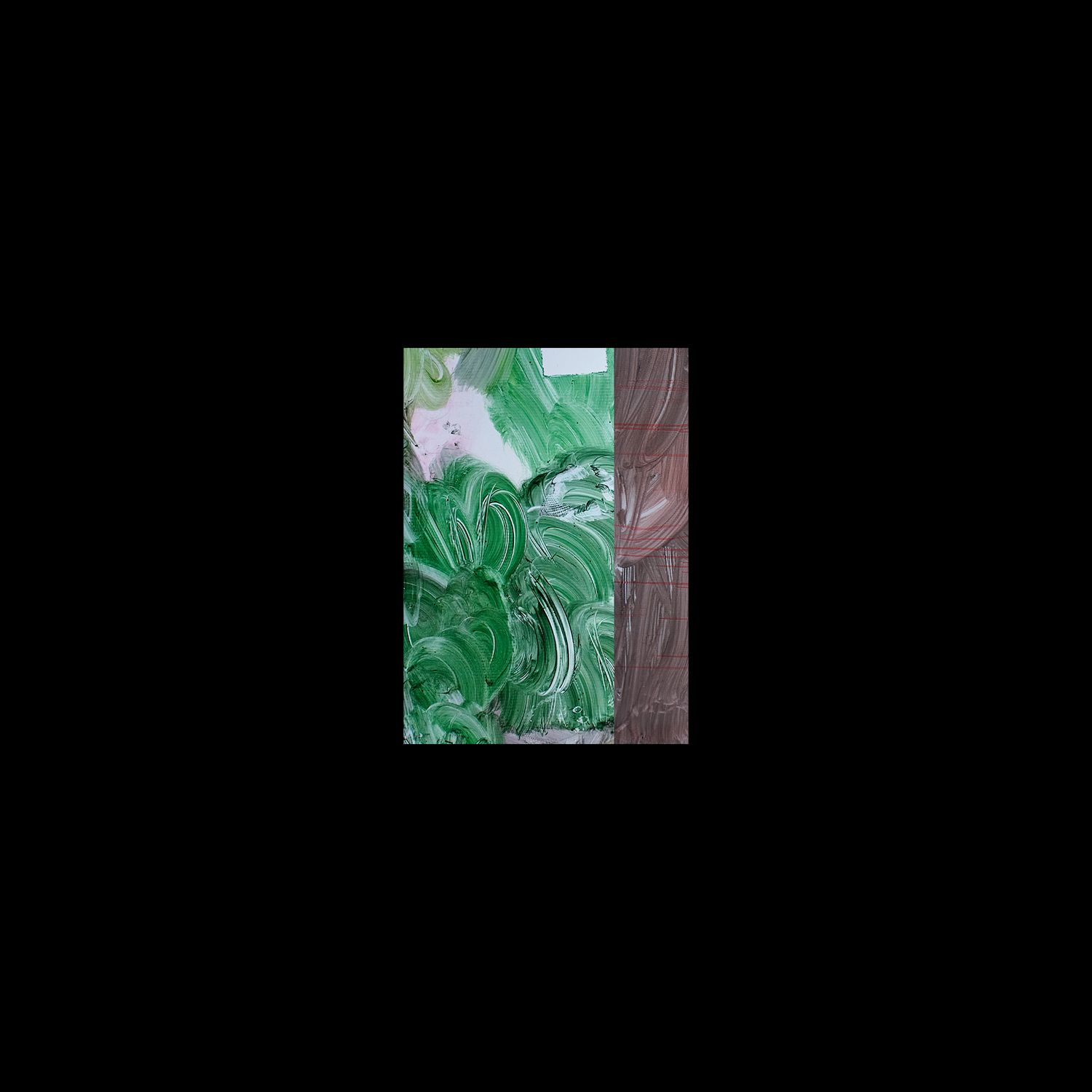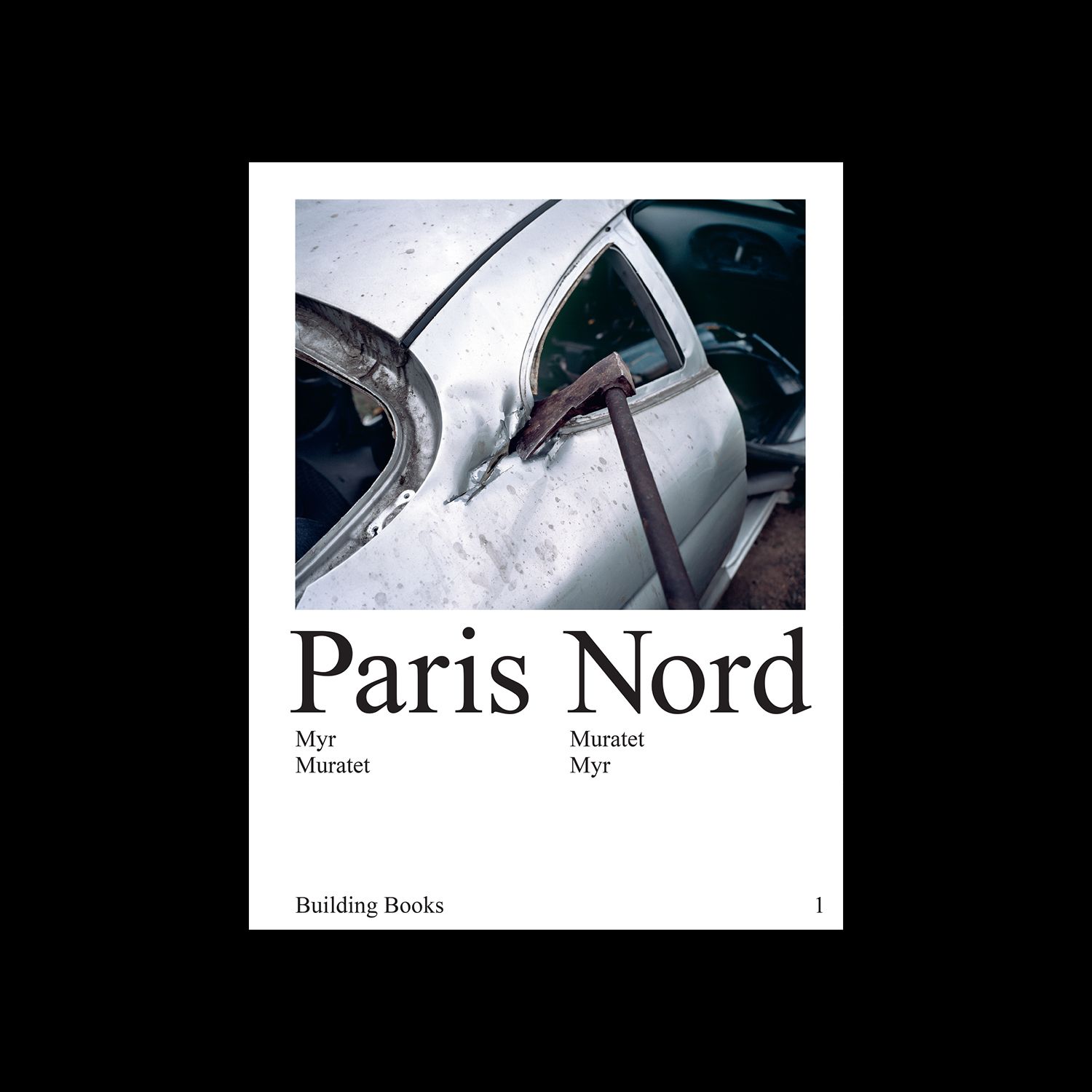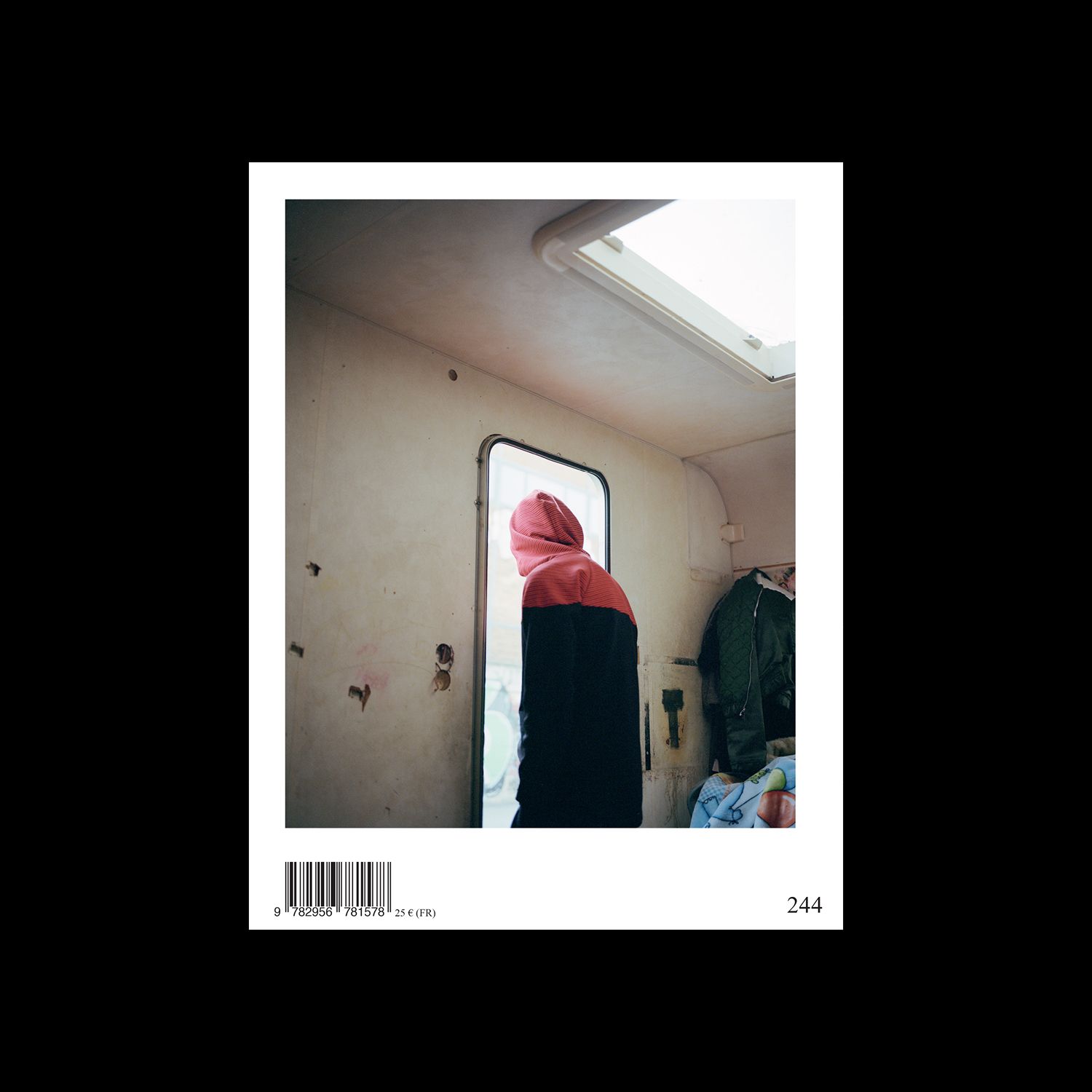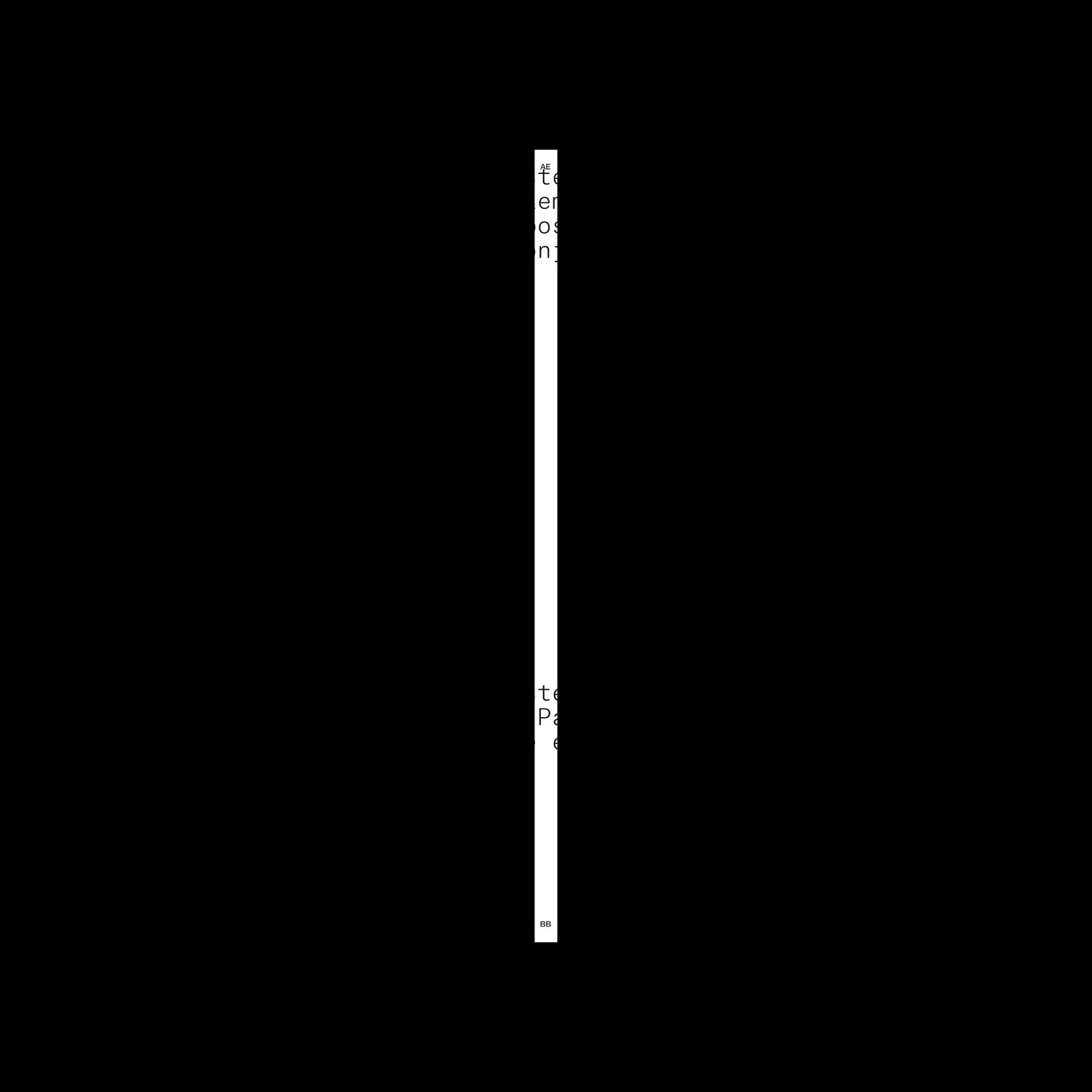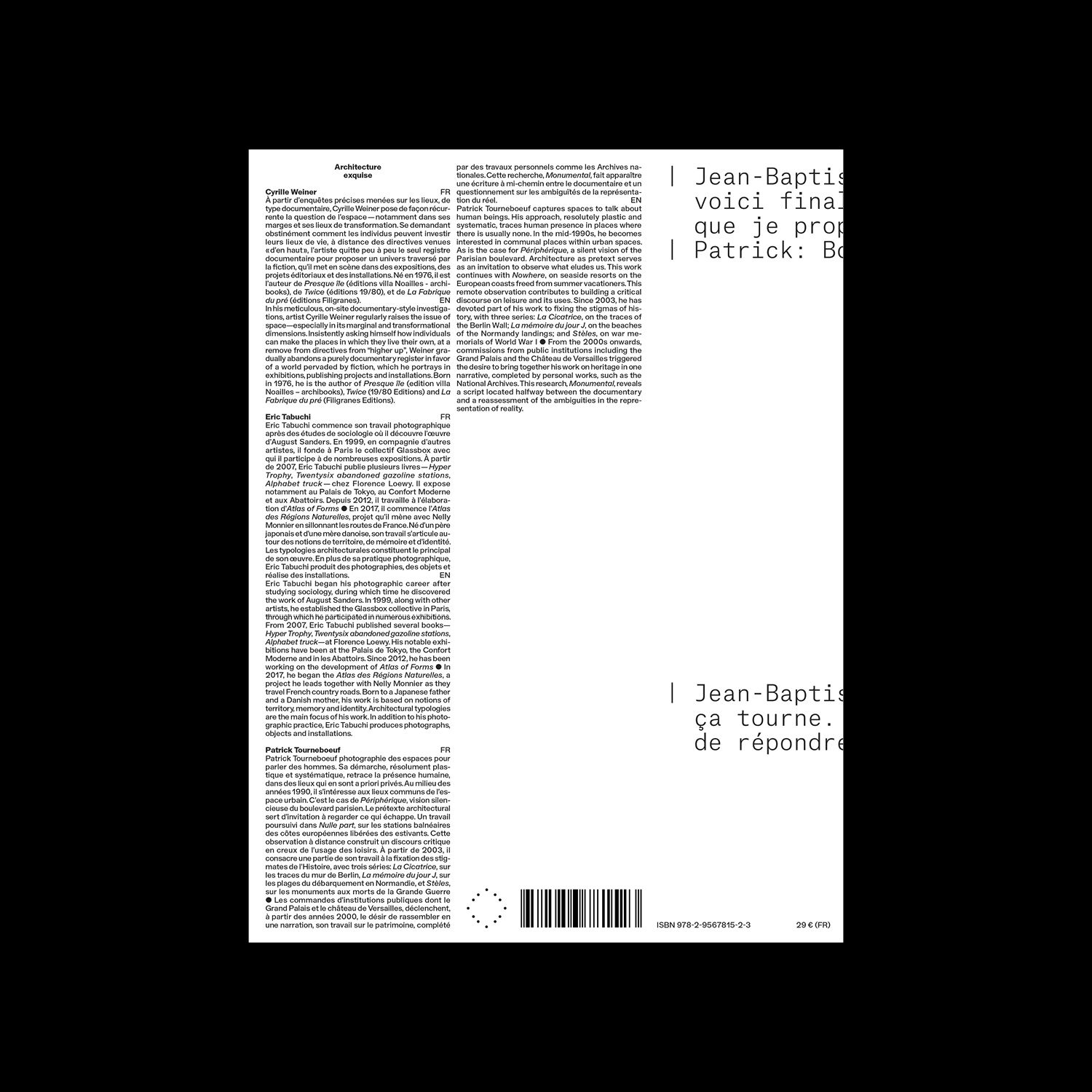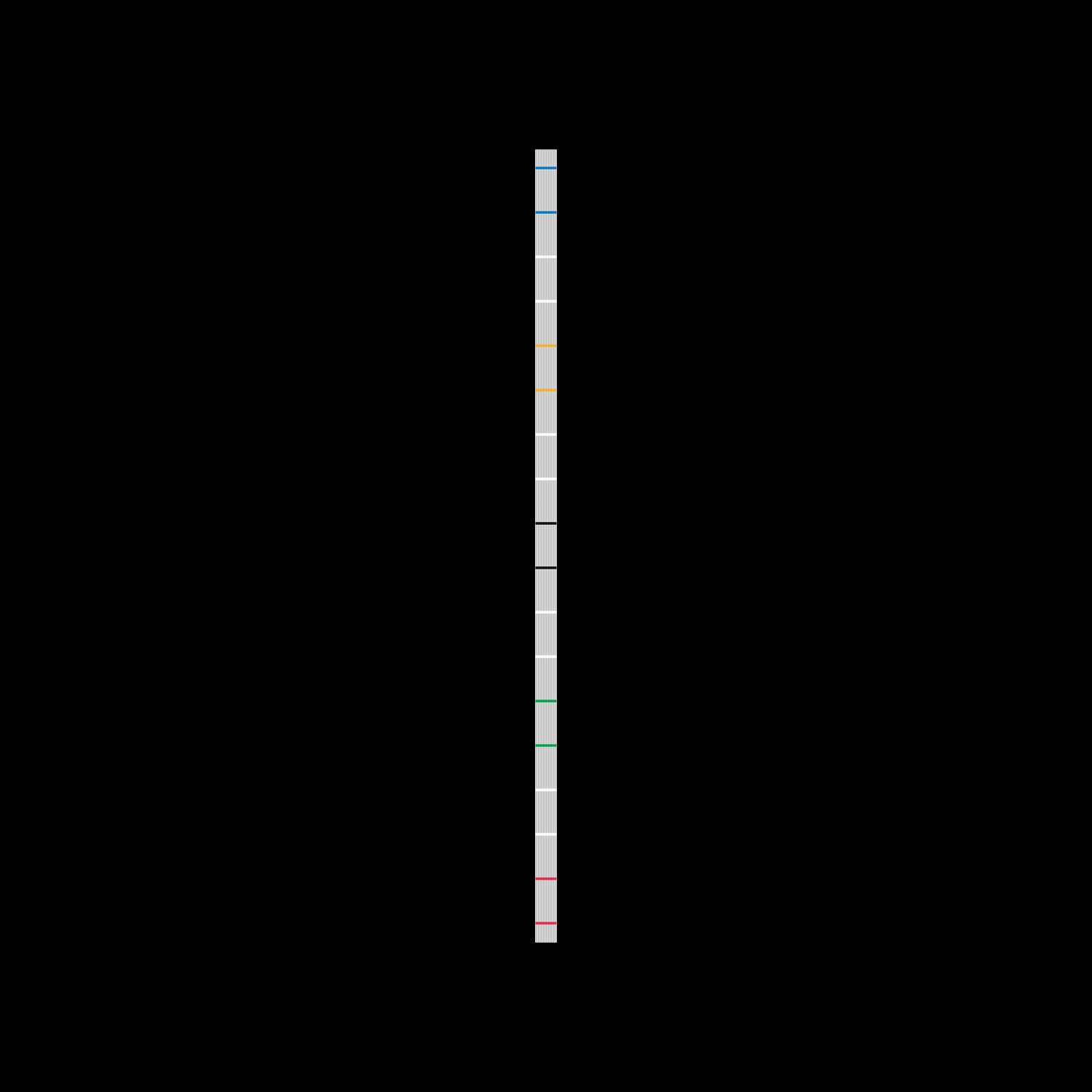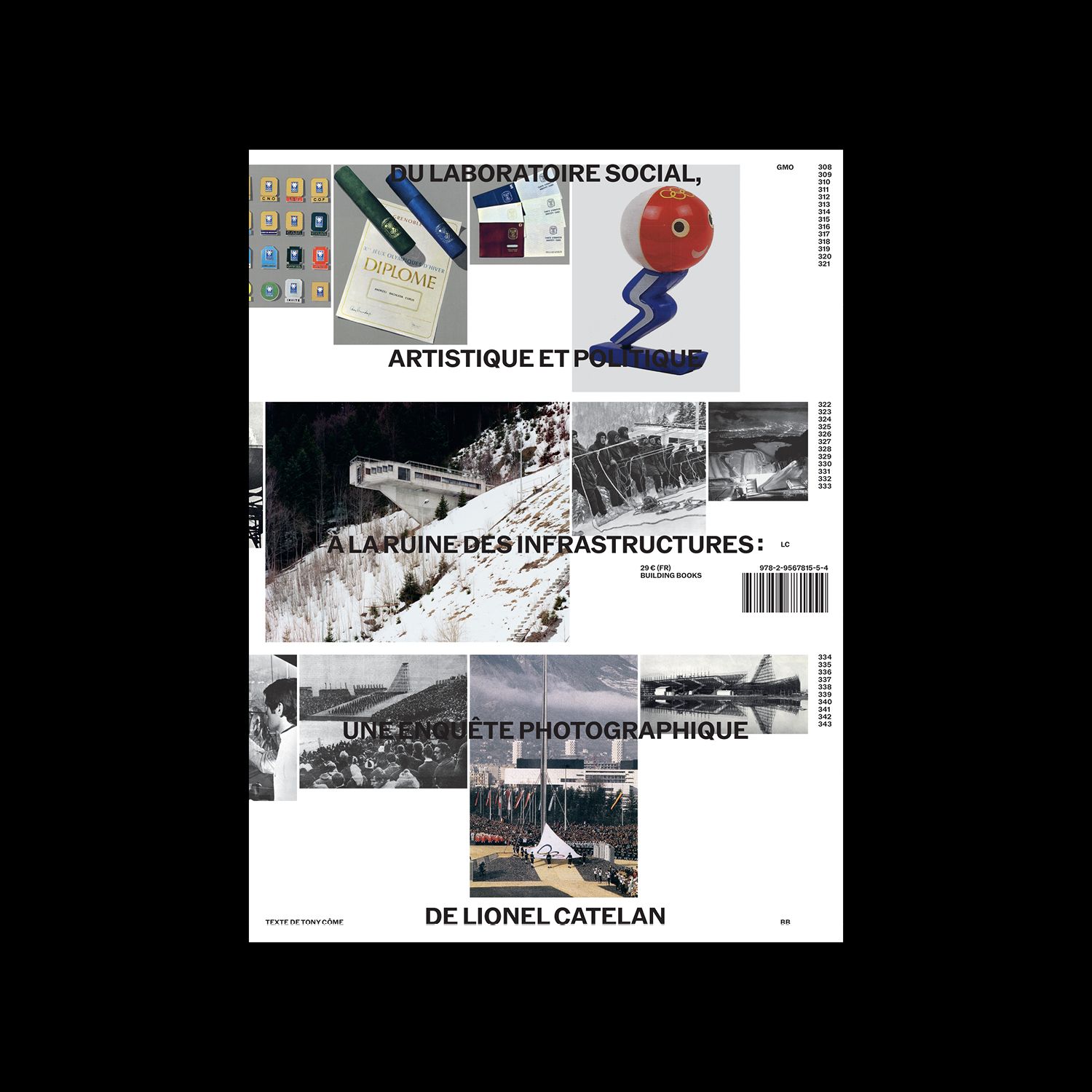

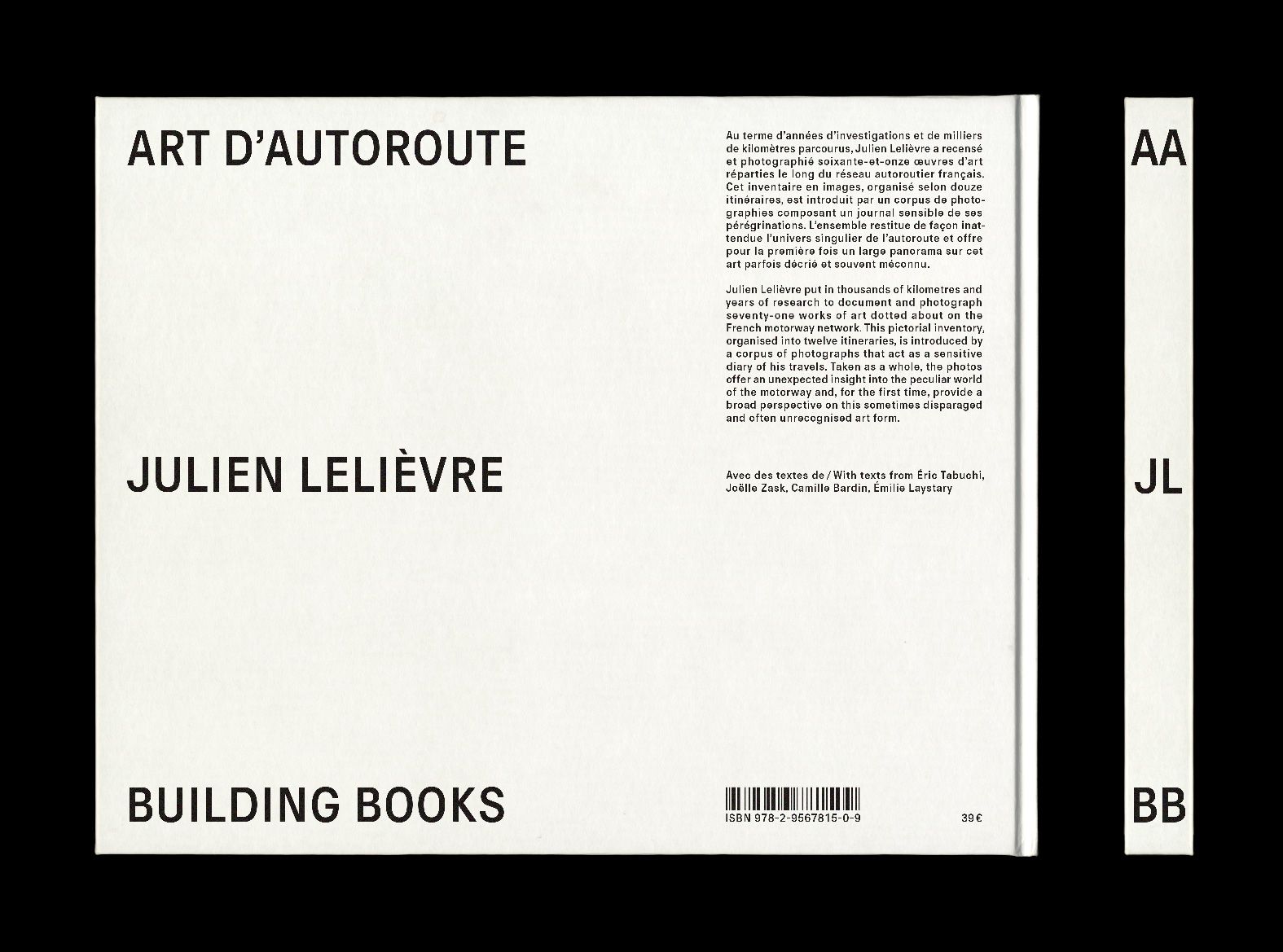

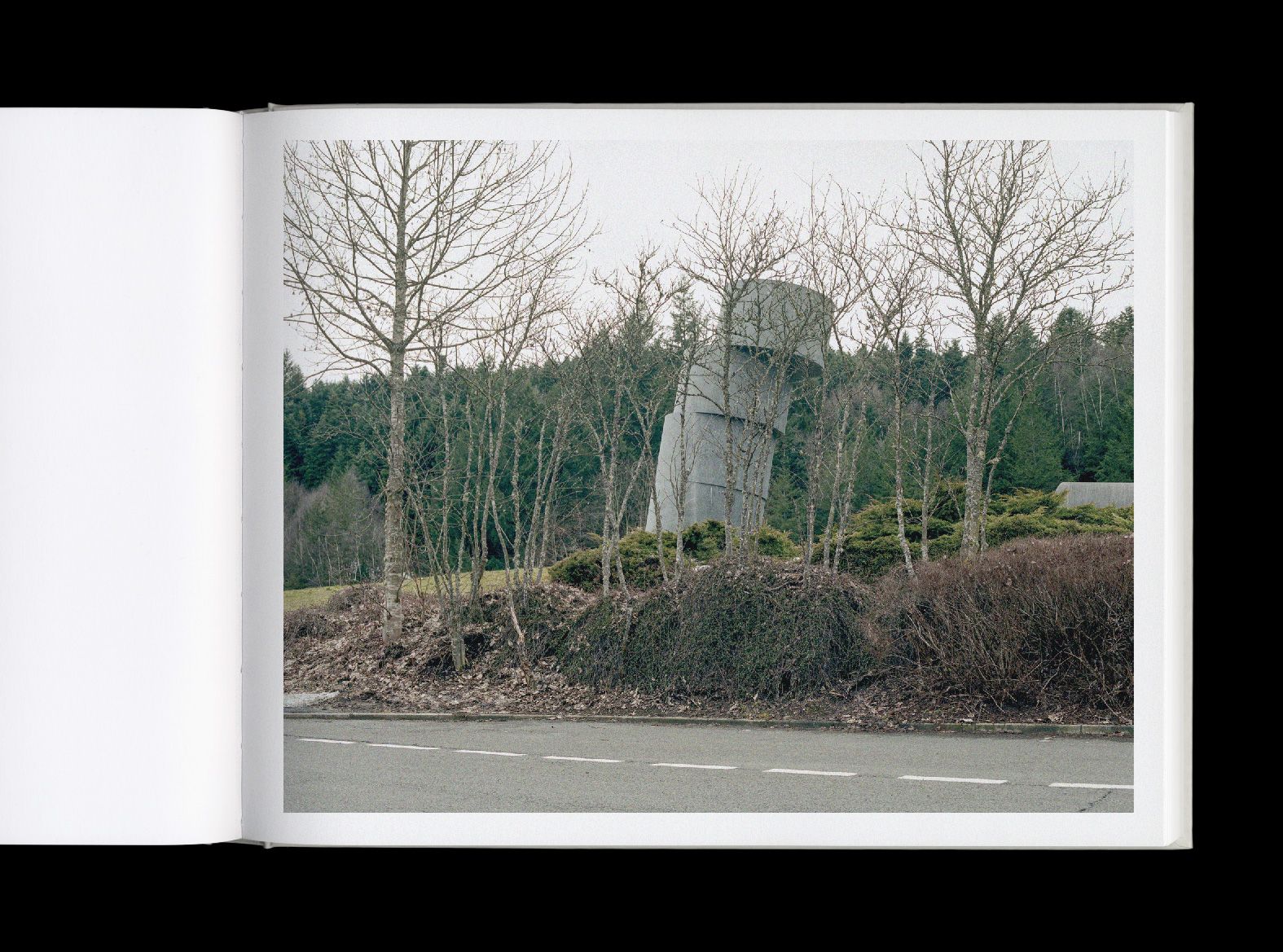
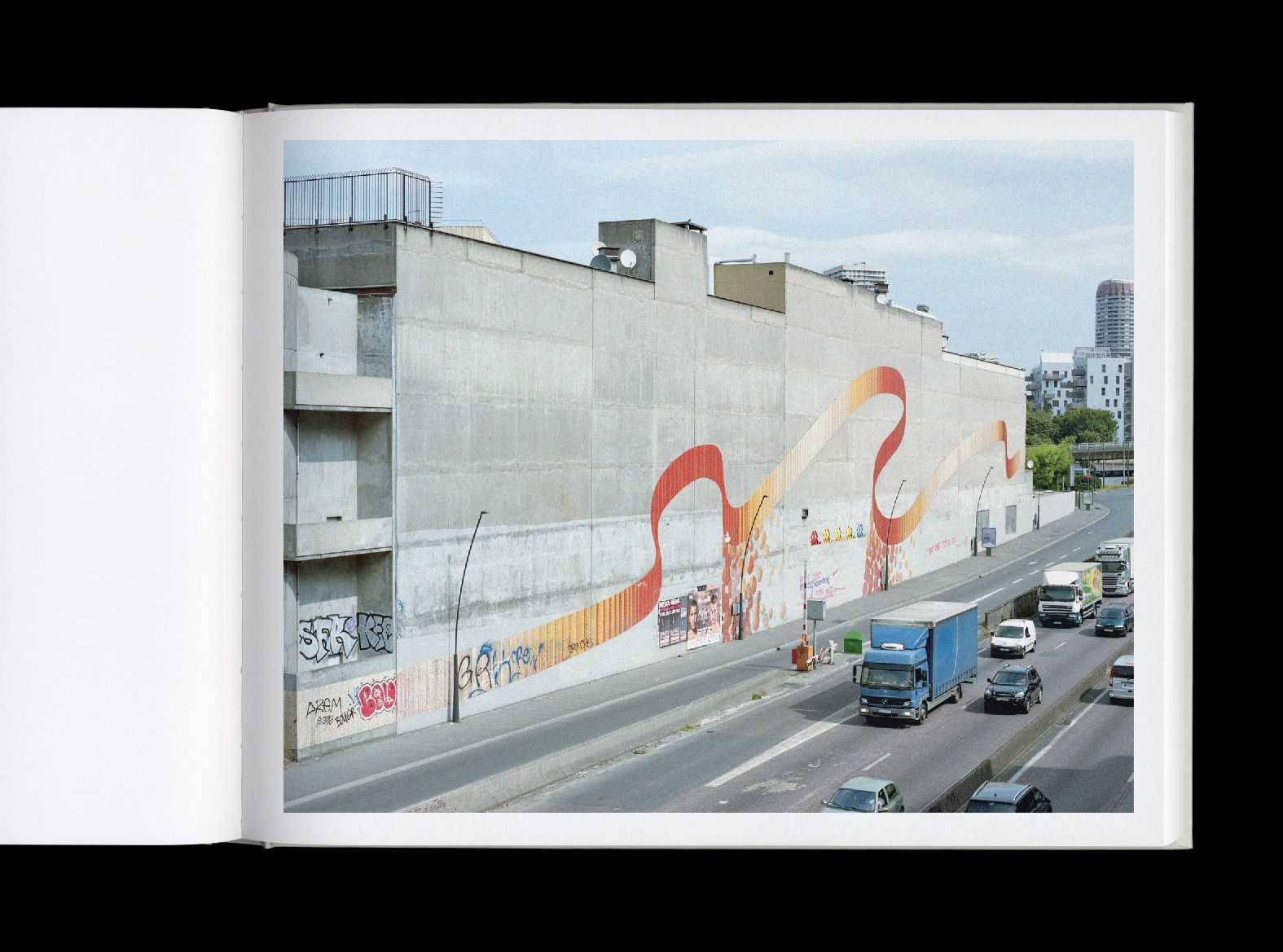
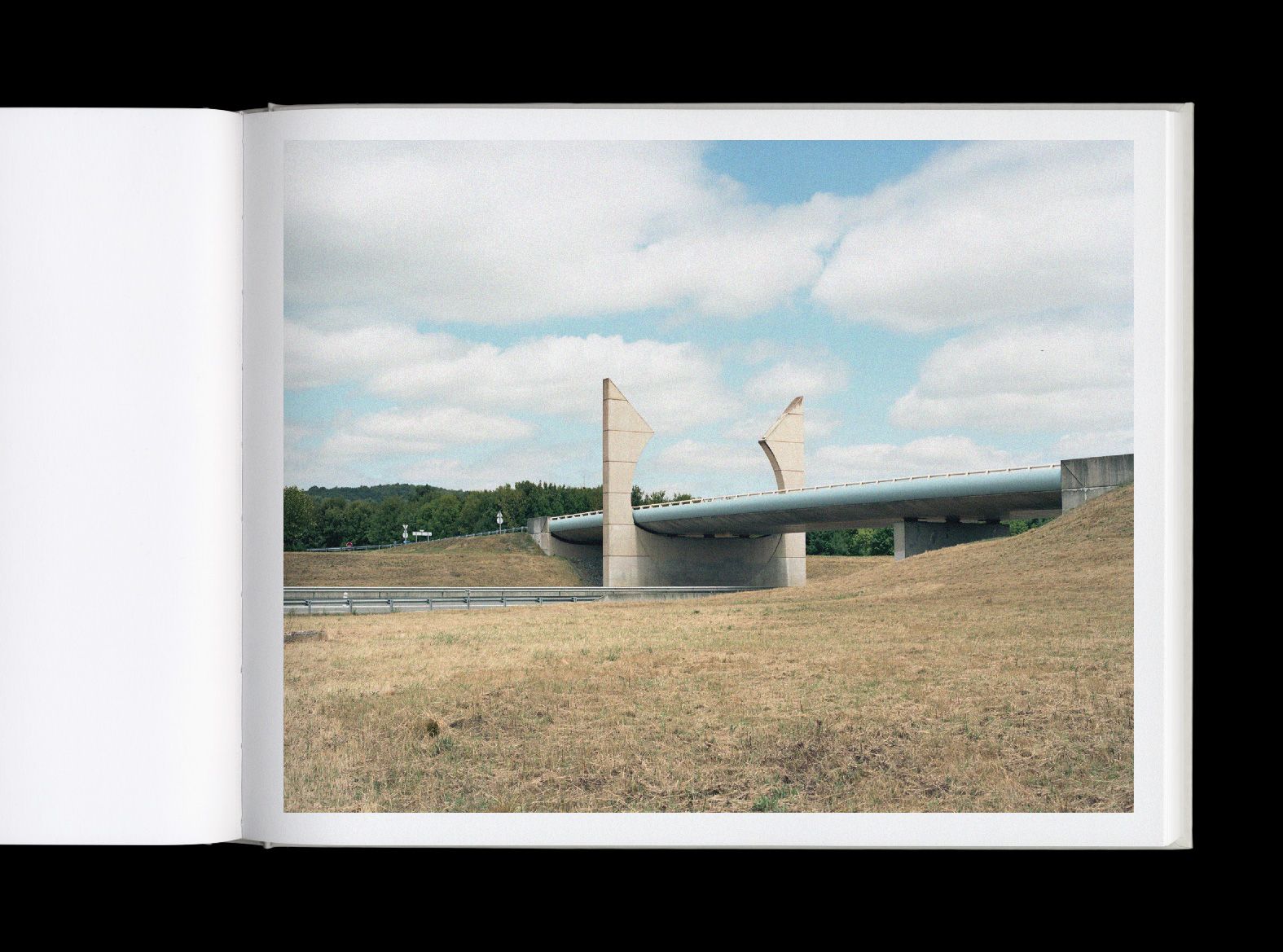
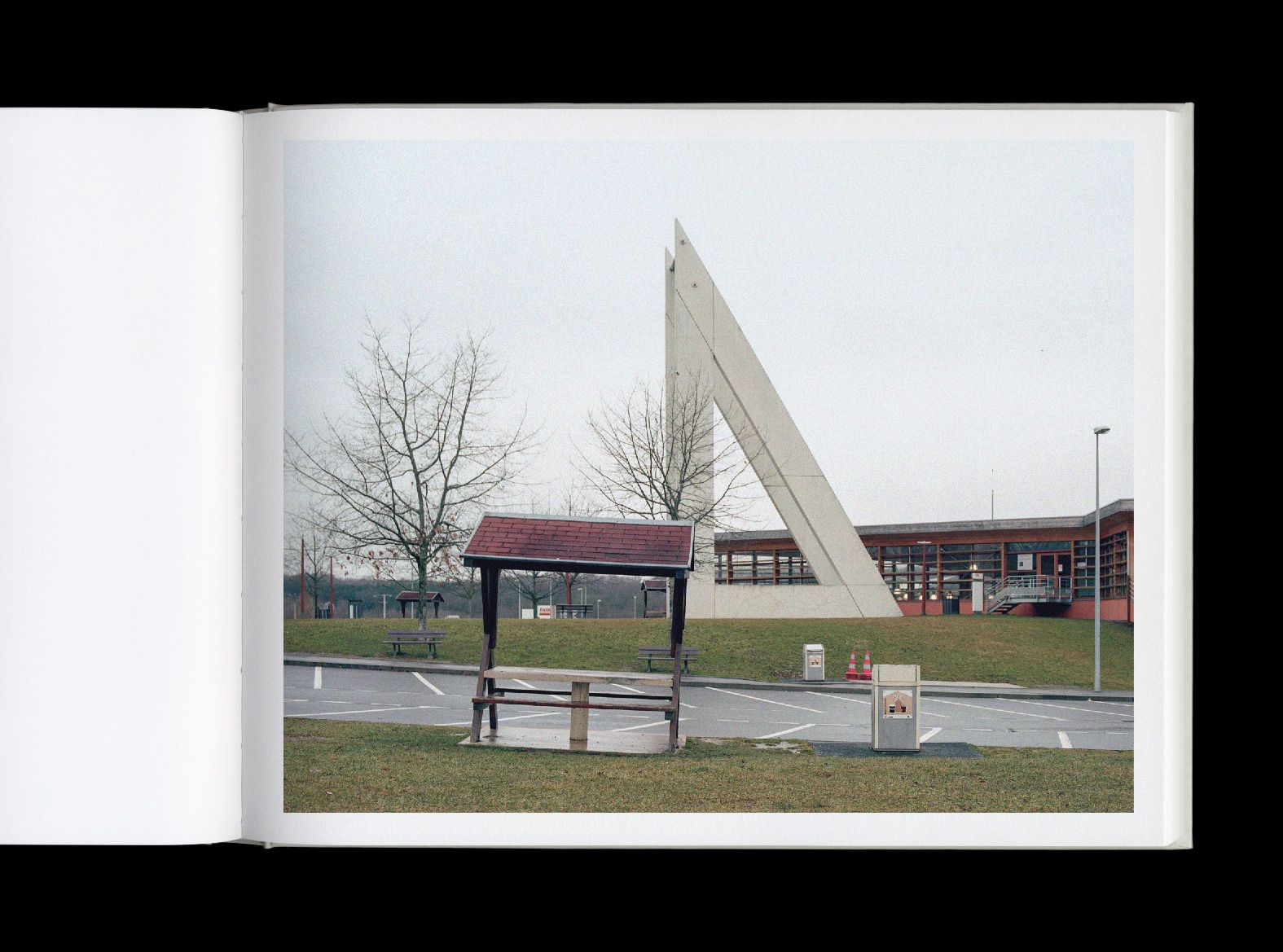


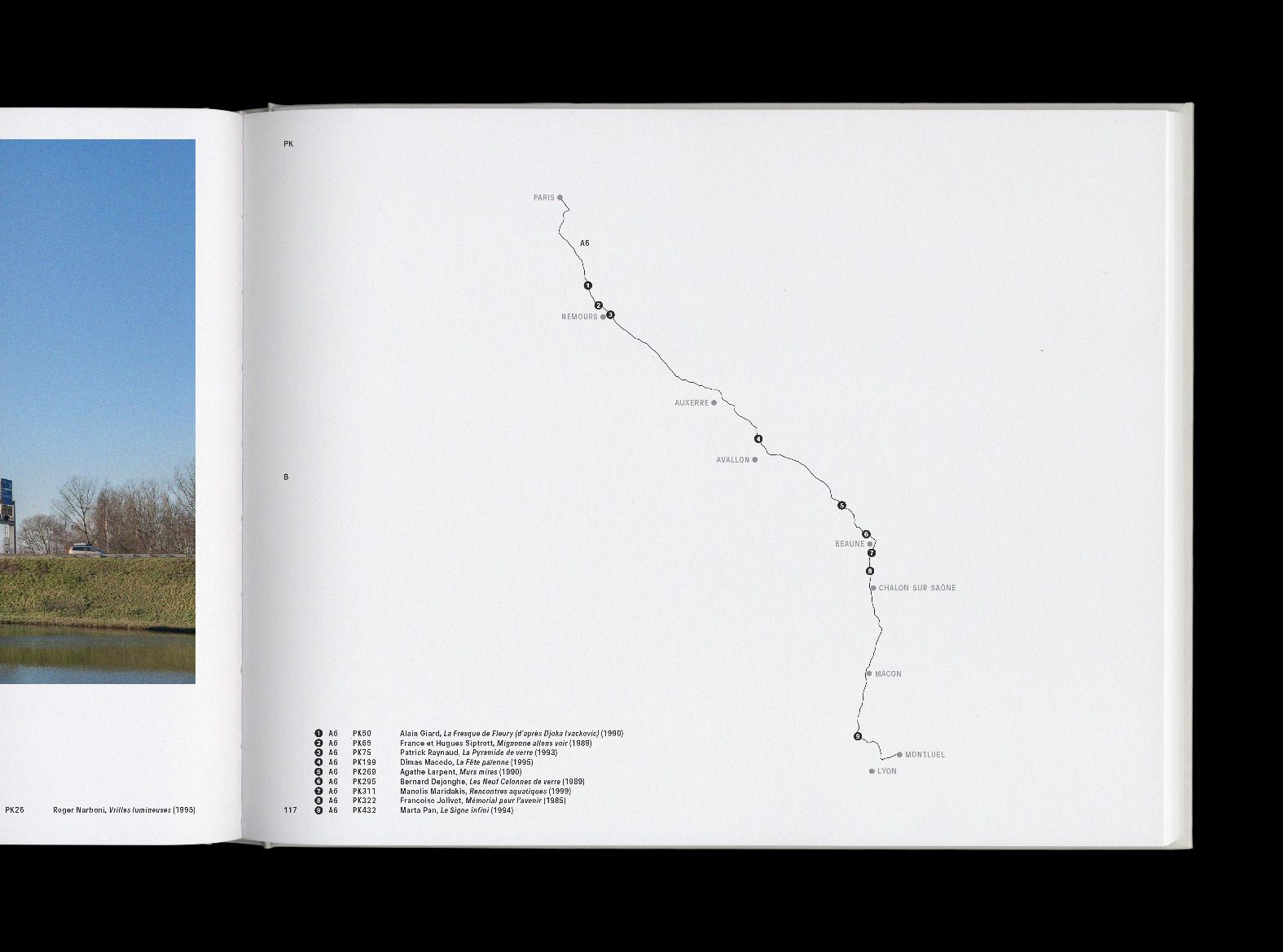
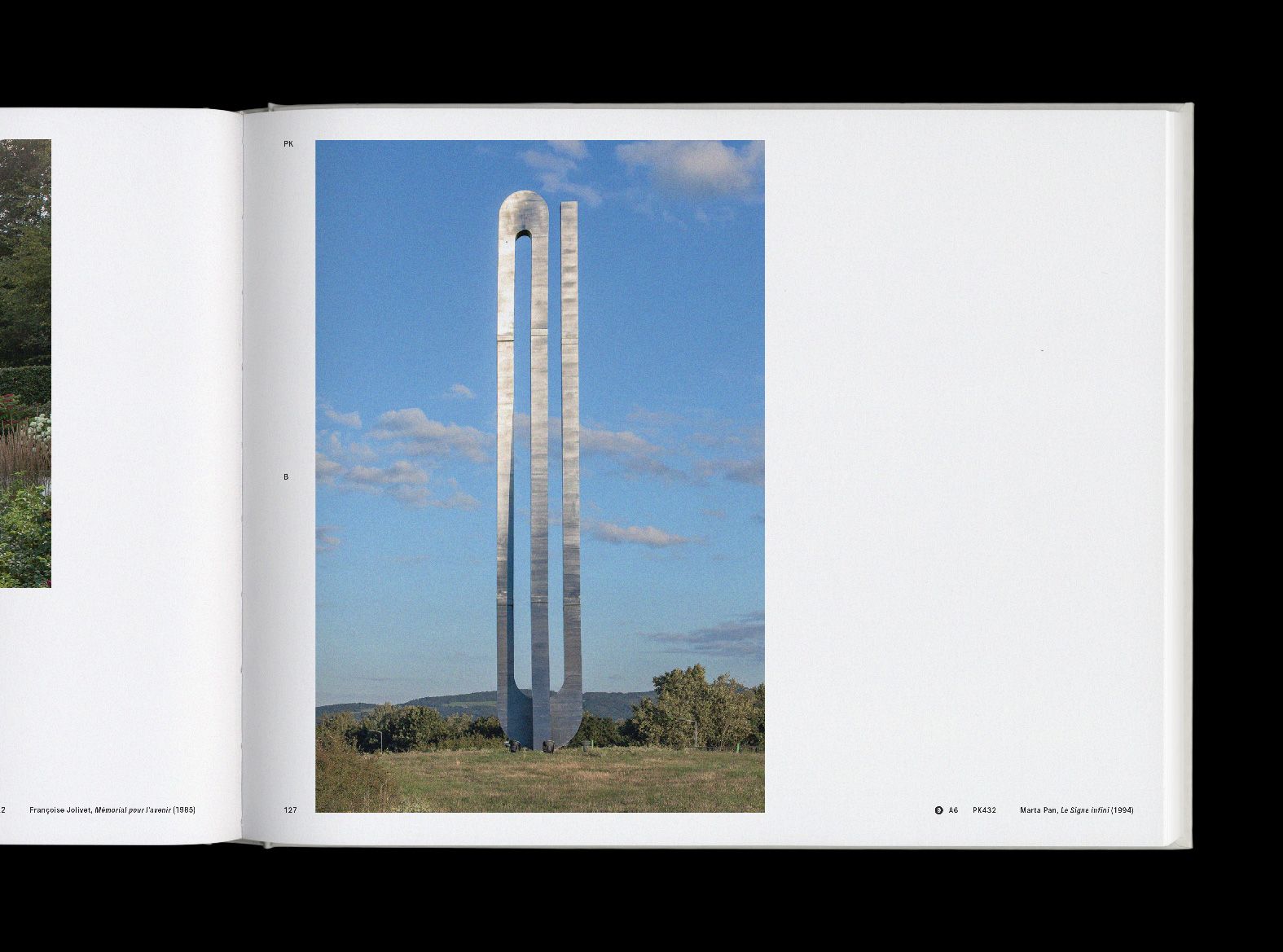
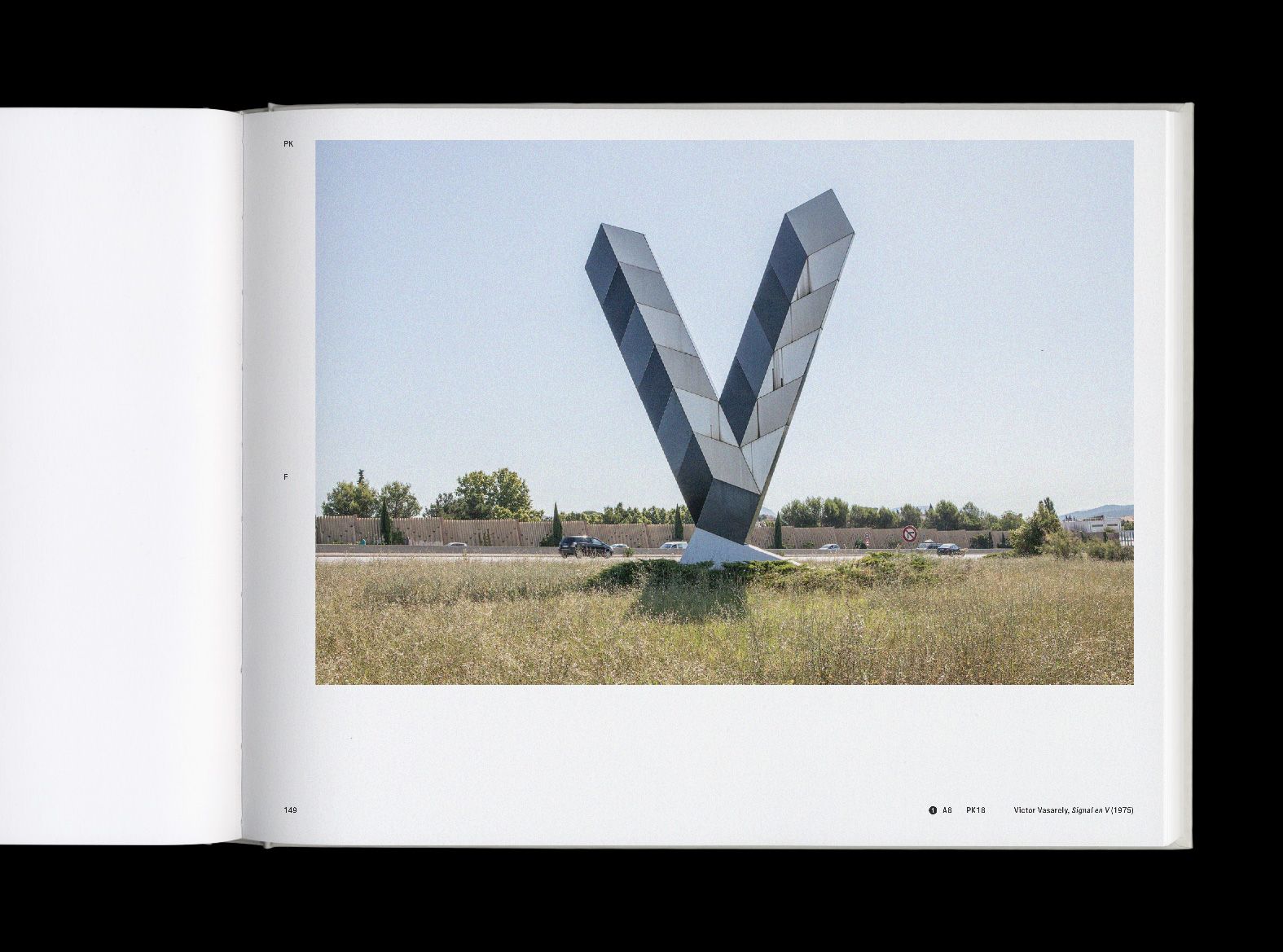

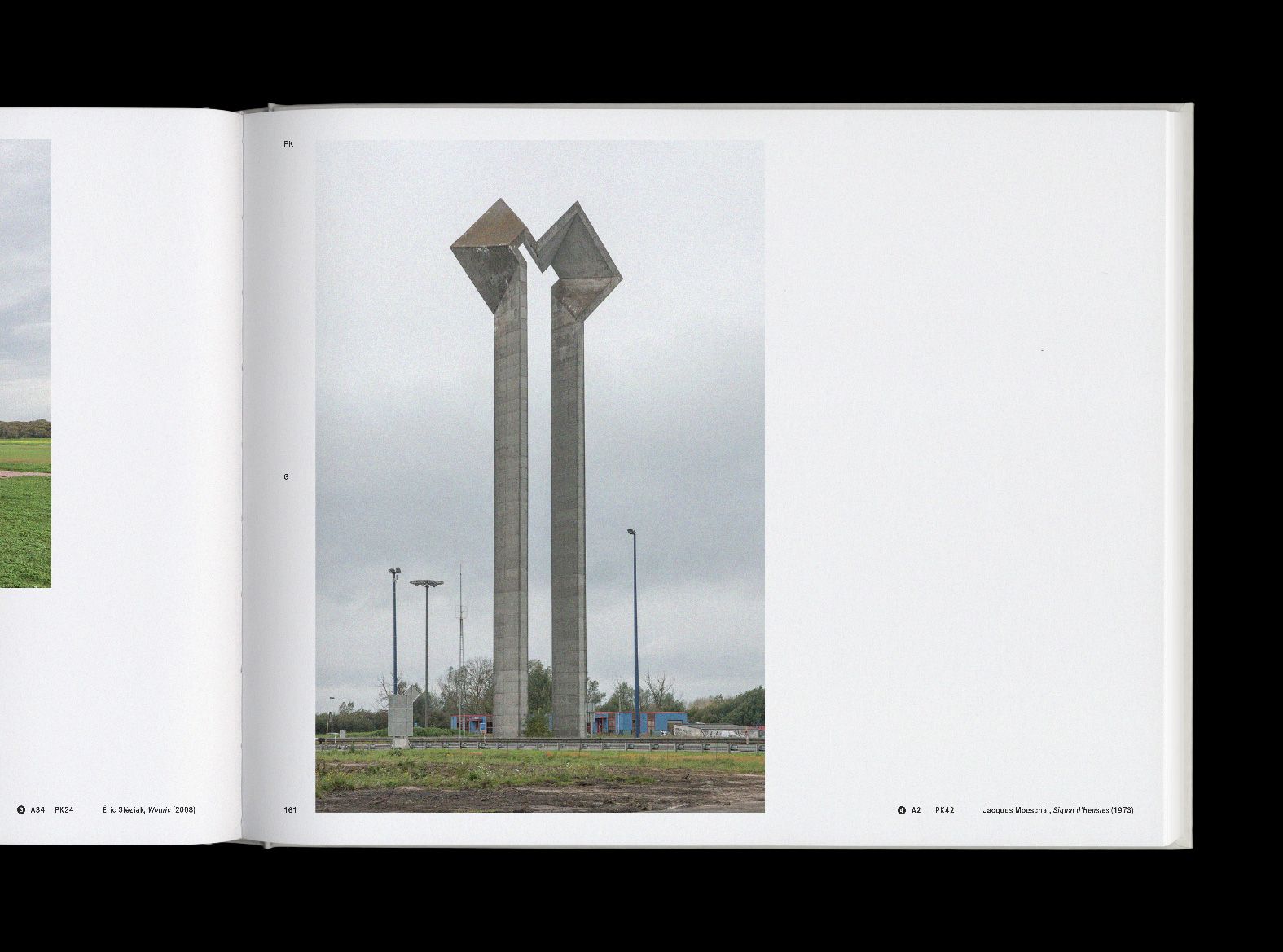
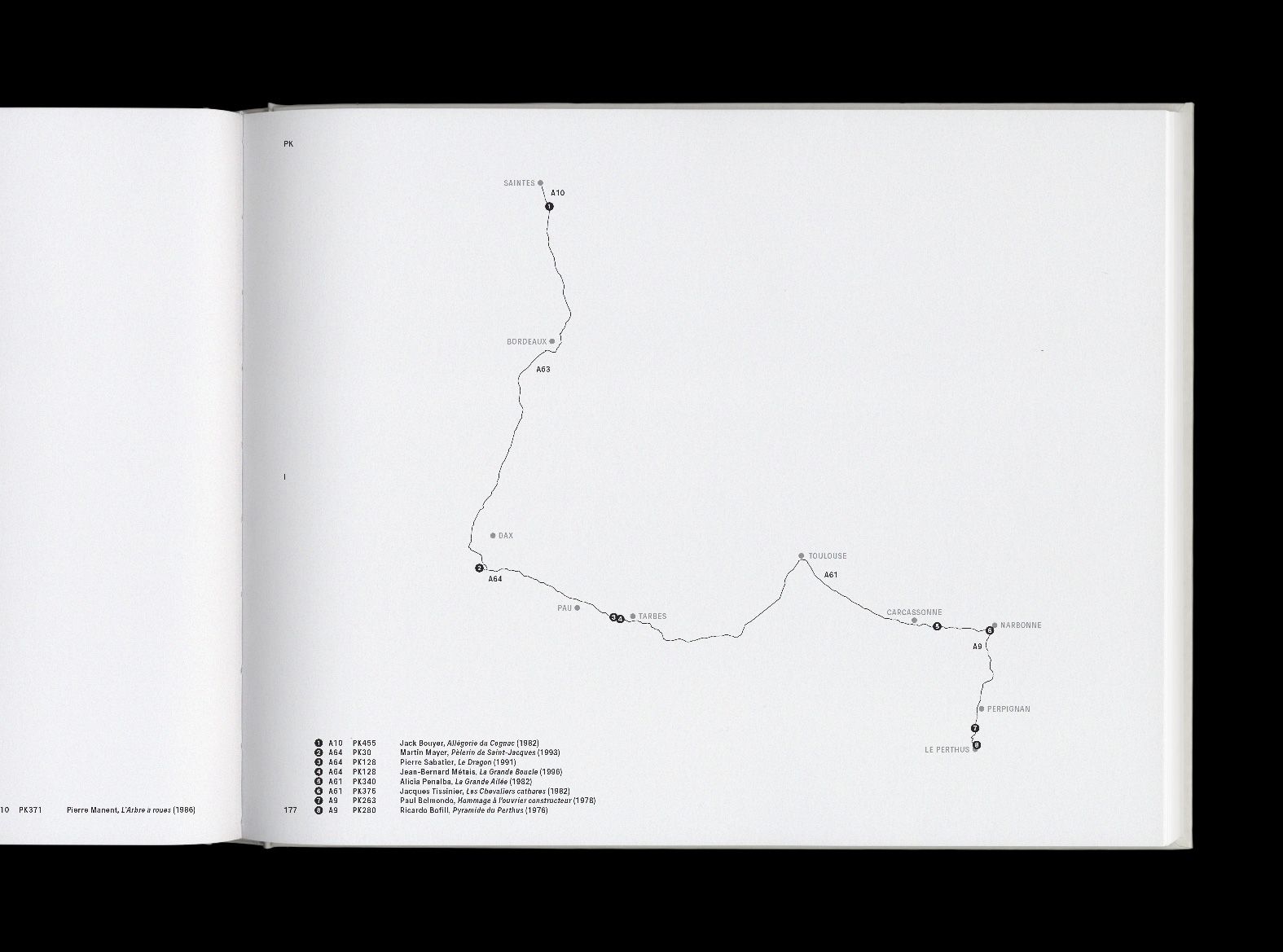
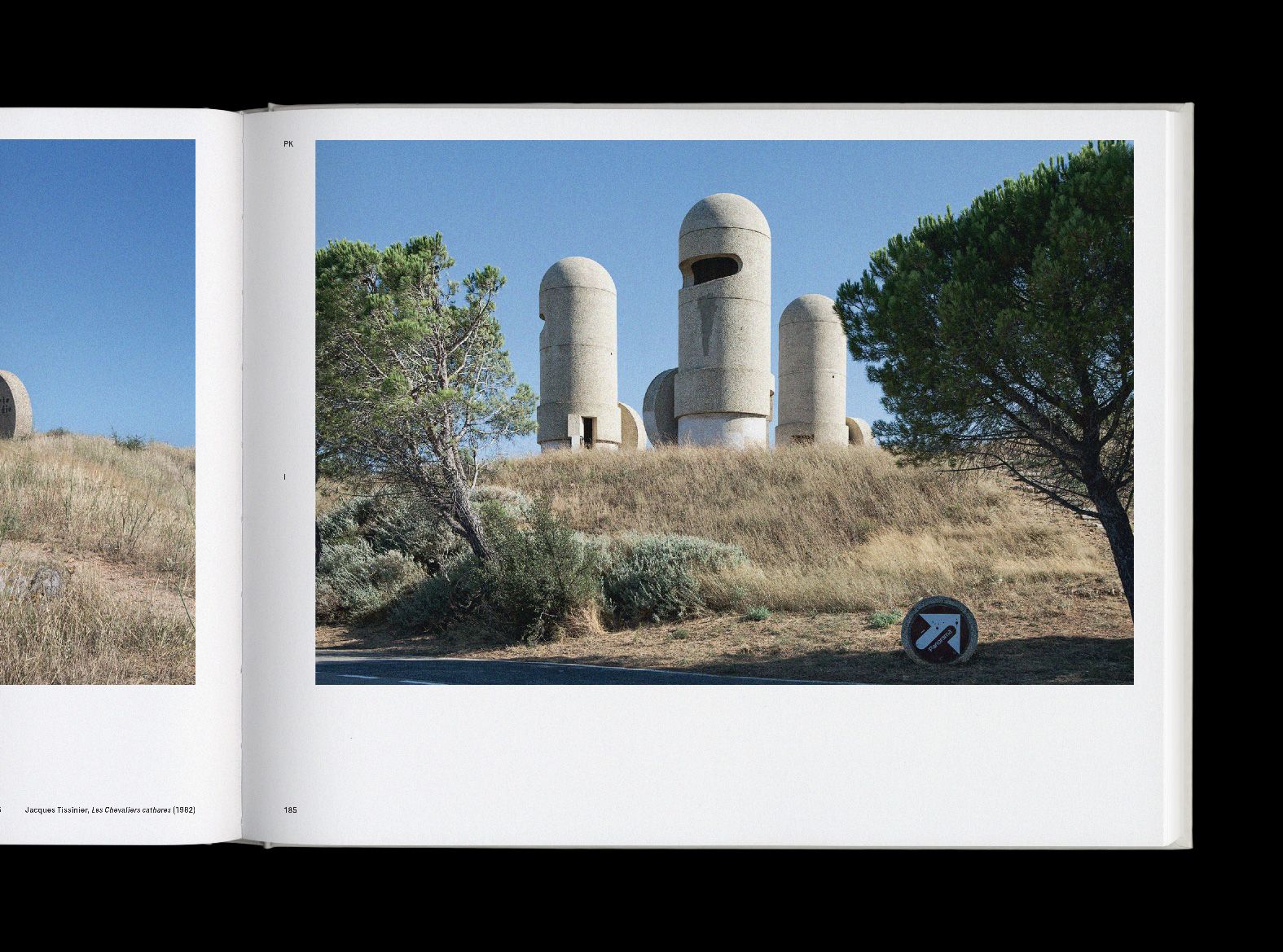
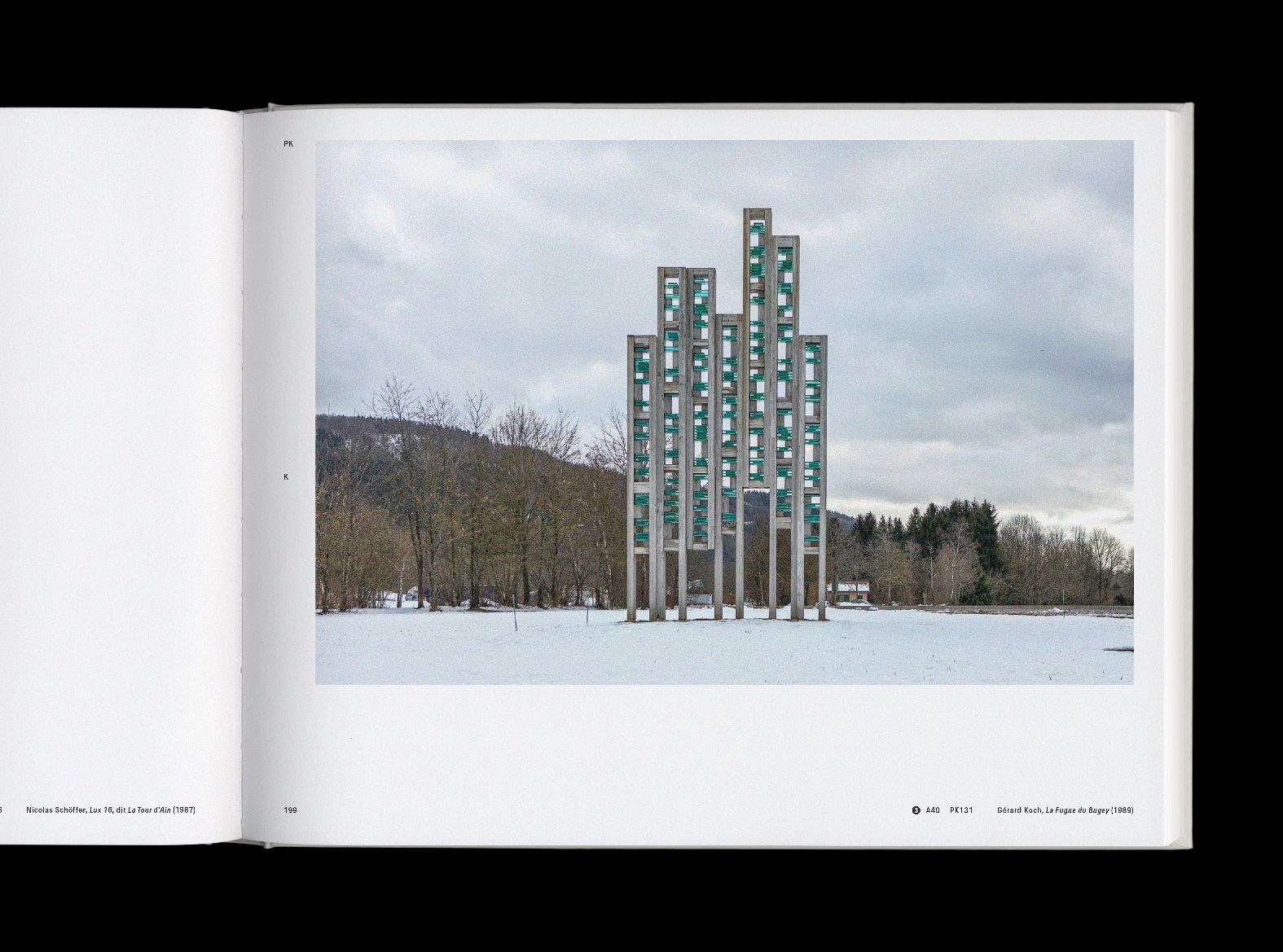
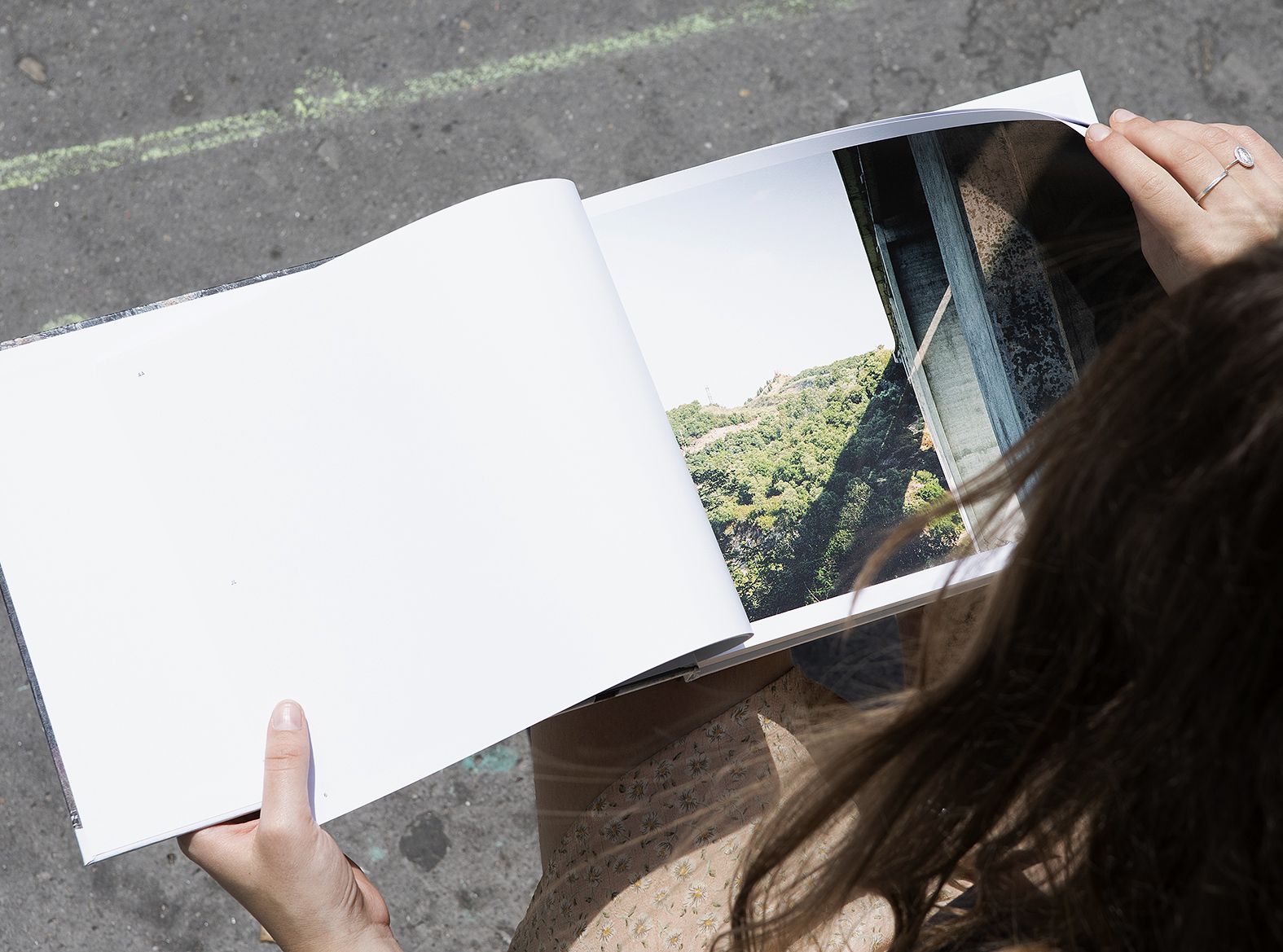
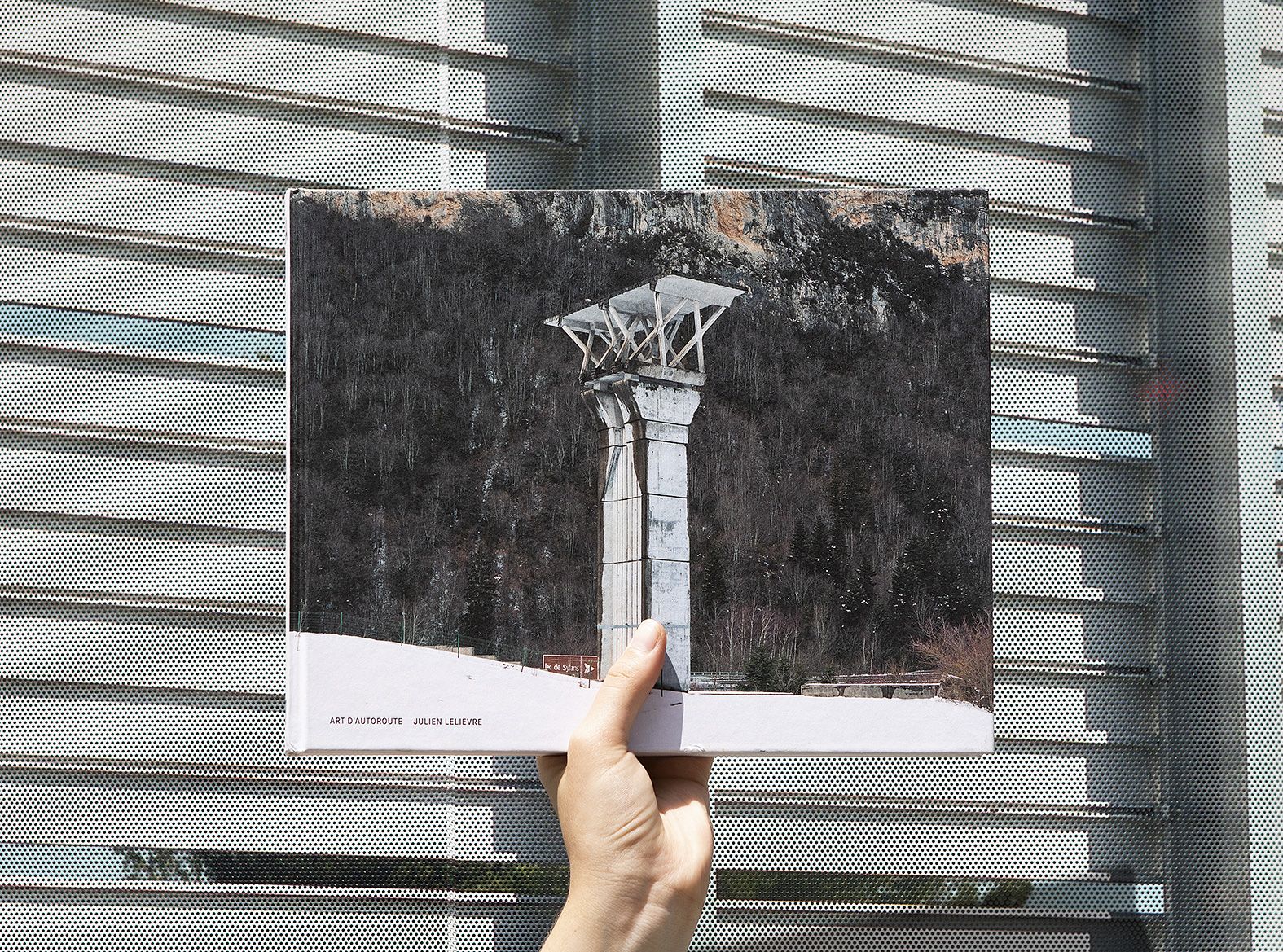
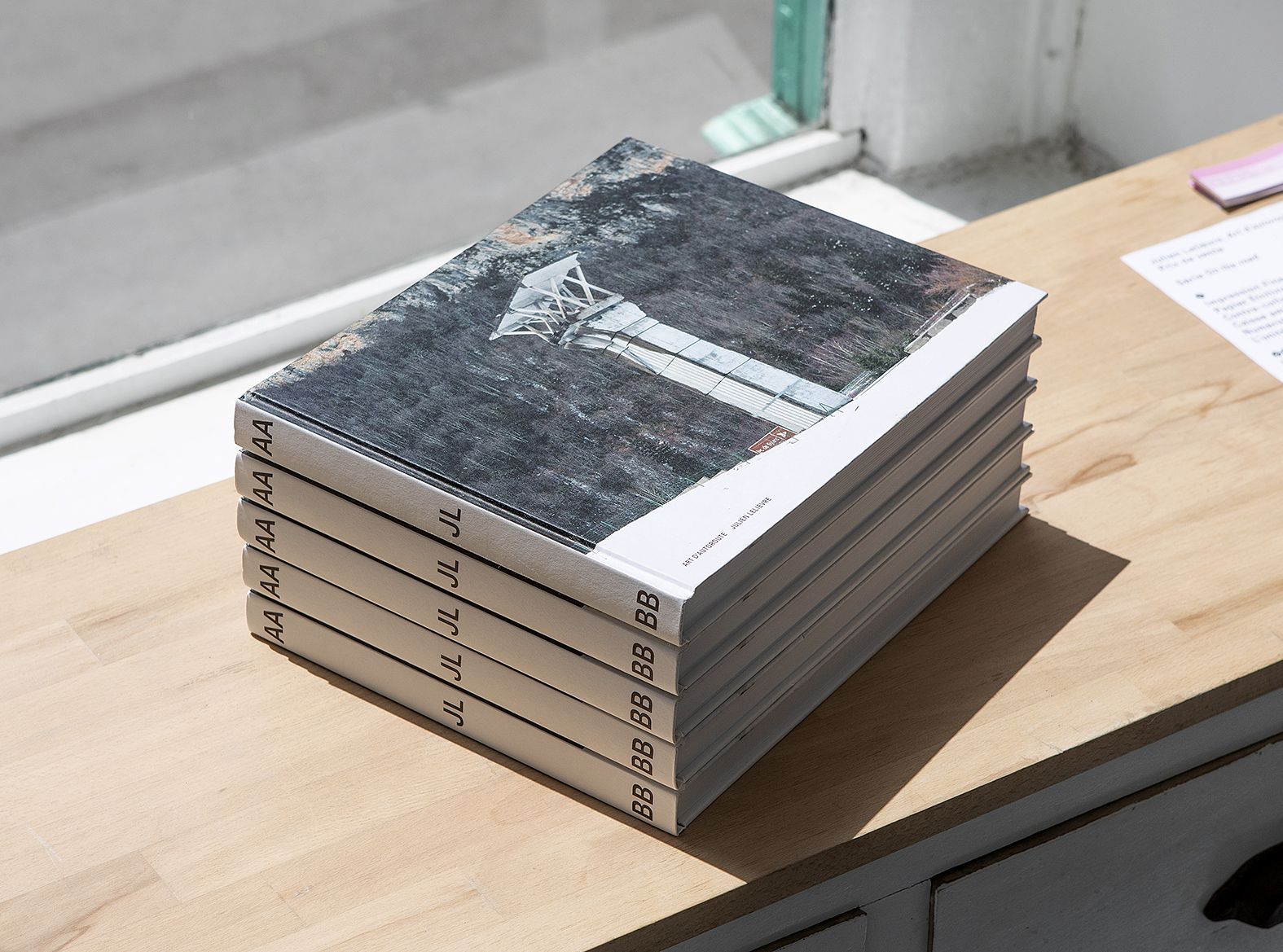




















Art d’Autoroute
Julien Lelièvre
ISBN 978-2-9567815-0-9
39 €
FR — Au terme d’années d’investigations et de milliers de kilomètres parcourus, Julien Lelièvre a recensé et photographié soixante-et-onze œuvres d’art réparties le long du réseau autoroutier français. Cet inventaire en images, organisé selon douze itinéraires, est introduit par un corpus de photographies composant un journal sensible de ses pérégrinations. L’ensemble restitue de façon inattendue l’univers singulier de l’autoroute et offre pour la première fois un large panorama sur cet art parfois décrié et souvent méconnu.
Avec des textes de Eric Tabuchi, Joëlle Zask, Camille Bardin, Émilie Laystary.
EN — Julien Lelièvre put in thousands of kilometres and years of research to document and photograph seventy-one works of art dotted about on the French motorway network. This pictorial inventory, organised into twelve itineraries, is introduced by a corpus of photographs that act as a sensitive diary of his travels. Taken as a whole, the photos offer an unexpected insight into the peculiar world of the motorway and, for the first time, provide a broad perspective on this sometimes disparaged and often unrecognised art form.
With texts from Eric Tabuchi, Joëlle Zask, Camille Bardin, Émilie Laystary.
Infos
FR — Couverture dure
Format 29×23 cm, 216 pages
Langues FR / EN
Iconographie 160 images couleur
Conception graphique Building Paris
Typographie Signal PK, Signal Compressed (Production Type, 2019)
Imprimé par Wilco Art Books à Amersfoort (NL)
EN — Hardcover
Format 29×23 cm, 216 pages
Languages FR / EN
Illustrations 160 colour pictures
Graphic design Building Paris
Typeface Signal PK, Signal Compressed (Production Type, 2019)
Printed by Wilco Art Books in Amersfoort (NL)
Julien Lelièvre
FR — Julien Lelièvre est photographe et graphiste. Il mène parallèlement projets personnels, résidences d'artistes et travaux de commande, seul ou au sein d’un collectif pluridisciplinaire. Dans ses pratiques, qui se complètent ou se télescopent, il cherche toujours l’équilibre entre formalisme et lisibilité, abordant l’image à tous les stades de sa production : de la prise de vue à l’élaboration d’un ouvrage, du tracé d’un logo à la composition d’une affiche… Particulièrement attaché à l’architecture et aux paysages modestes, son œuvre photographique, d’un minimalisme frontal, dénote une attention bienveillante aux détails de notre quotidien.
EN — Julien Lelièvre is a photographer and graphic designer. He carries out personal projects, artist residencies and commissioned work in parallel, alone or within a multidisciplinary collective. In his practices, which complement or overlap each other, he always seeks a balance between formalism and legibility, approaching the image at all stages of its production: from the shooting to the elaboration of a book, from the drawing of a logo to the composition of a poster... Particularly attached to architecture and modest landscapes, his photographic work, with its frontal minimalism, shows a caring attention to the details of our daily lives.
Camille Bardin
FR — Camille Bardin est née en 1997, elle est critique d’art indépendante, commissaire d'expositions et fondatrice du podcast Présent·e. Après avoir écrit pour diverses revues, elle s’engage auprès du collectif Jeunes Critiques d’Art pour une critique qu’elle souhaite indépendante et engagée. Elle en devient co-présidente en 2019 et cofonde la confédération internationale Young Art Criticism (YACI) la même année. Depuis 2020, elle anime le podcast Présent·e qui offre une plongée dans l'intimité de la création. Elle collabore aujourd’hui à la rédaction de catalogues d'expositions et de monographies pour diverses galeries et institutions, co-anime l’émission Traversée et présente chaque mois le podcast Pourvu qu'iels soient douxces produits par Projets Média et pensé par Jeunes Critiques d’Art.
EN — Camille Bardin was born in 1997. She is an independent art critic, exhibition curator and founder of the podcast Présent-e. After writing for various magazines, she became involved with the Jeunes Critiques d’Art collective for a criticism that she wishes to be independent and committed. She became co-president in 2019 and co-founded the international confederation Young Art Criticism (YACI) the same year. Since 2020, she has hosted the podcast Présent-e, which offers an intimate look at the creative process. Today, she collaborates in the writing of exhibition catalogues and monographs for various galleries and institutions, co-hosts the programme Traversée and presents the monthly podcast Pourvu qu'iels soient douxces produced by Projets Média and designed by Jeunes Critiques d’Art.
Émilie Laystary
FR — Émilie Laystary est journaliste société. Elle écrit pour Libération et anime le podcast Bouffons (produit par Nouvelles Écoutes), dont le fil rouge consiste à utiliser l’alimentation comme loupe pour analyser des faits de société. Engagée dans l’association de femmes journalistes Prenons la Une, elle a également co-créé l’antenne provençale de L’école comestible, qui milite pour que l’éducation alimentaire fasse partie des programmes scolaires afin de lutter contre la fracture sociale dans l’assiette. Émilie donne également un cours d’écriture en master de sémiologie à la faculté de Nanterre. Petit traité de bouffe (Marabout, 2022), son premier livre, jette des ponts entre le monde universitaire et celui de la cuisine, à la manière des food studies.
EN — Émilie Laystary is a society journalist. She writes for Libération and hosts the podcast Bouffons (produced by Nouvelles Écoutes), which uses food as a magnifying glass to analyse social issues. She is involved in the association of women journalists Prenons la Une, and she also co-created the Provençal branch of L‘école comestible, which campaigns for food education to be included in school curricula in order to fight against the social divide in the food supply. Émilie also teaches a writing course for a master’s degree in semiology at the University of Nanterre. Petit traité de bouffe (Marabout, 2022), her first book, builds bridges between the academic world and that of cooking, in the manner of food studies.
Eric Tabuchi
FR — Eric Tabuchi est né en 1959 à Paris, il vit et travaille à Paris. Après des études de sociologie où il découvre l’œuvre d’August Sanders, il commence son travail photographique. En 1999, en compagnie d’autres artistes, il fonde à Paris le collectif Glassbox avec qui il participe à de nombreuses expositions. À partir de 2007, Eric Tabuchi publie plusieurs livres — Hyper Trophy, Twentysix Abandoned Gazoline Stations, Alphabet Truck — chez Florence Loewy. Il expose notamment au Palais de Tokyo, au Confort Moderne et aux Abattoirs. À partir de 2014, il travaille à l’élaboration d’Atlas of Forms qu’il publie en 2018 chez Poursuite. Depuis 2017, il se consacre à la réalisation de l’Atlas des Régions Naturelles, projet qu’il réalise avec Nelly Monnier et qu’il entend terminer en 2024. Né d’un père japonais et d’une mère danoise, son travail s’articule autour des notions de territoire, de mémoire et d’identité. Les typologies architecturales constituent le principal de son œuvre. En plus de sa pratique photographique, Eric Tabuchi produit des objets et réalise des installations.
EN — Eric Tabuchi was born in Paris in 1959 and lives and works in Paris. After studying sociology, where he discovered the work of August Sanders, he began his photographic work. In 1999, together with other artists, he founded the Glassbox collective in Paris, with whom he participated in numerous exhibitions. From 2007, Eric Tabuchi published several books—Hyper Trophy, Twentysix Abandoned Gazoline Stations, Alphabet Truck—with Florence Loewy. He exhibited at the Palais de Tokyo, the Confort Moderne and the Abattoirs. Since 2014, he has been working on Atlas of Forms, published in 2018 by Poursuite. Since 2017, he has been working on the Atlas des Régions Naturelles, a project he is carrying out with Nelly Monnier and which he intends to complete in 2024. Born to a Japanese father and a Danish mother, his work revolves around the notions of territory, memory and identity. Architectural typologies are the main focus of his work. In addition to his photographic practice, Eric Tabuchi produces objects and installations.
Joëlle Zask
FR — Joëlle Zask est enseignante-chercheuse au département de philosophie de l’université Aix-Marseille. Spécialiste de John Dewey et de philosophie sociale, elle s’intéresse aux conditions d’une culture démocratique partagée. Ses réflexions l’amènent à plonger dans des domaines aussi différents que ceux de l’éducation, l’agriculture, l’économie, l’art, les politiques publiques et bien sûr l’écologie. Elle est l’auteure de plusieurs ouvrages, dont La Démocratie aux champs (La Découverte, 2016), Quand la place devient publique (Le Bord de l’eau, 2018) et, aux éditions Premier Parallèle, Quand la forêt brûle (2019) et Zoocities (2020).
EN — Joëlle Zask is a teacher-researcher in the philosophy department of the University of Aix-Marseille. A specialist in John Dewey and social philosophy, she is interested in the conditions of a shared democratic culture. Her reflections lead her to delve into fields as diverse as education, agriculture, economics, art, public policy and of course ecology. She is the author of several books, including La Démocratie aux champs (La Découverte, 2016), Quand la place devient publique (Le Bord de l’eau, 2018), and, published by Premier Parallèle, Quand la forêt brûle (2019), and Zoocities (2020).
Building Paris
FR — Building Paris est un studio de design graphique et de direction artistique fondé par Benoît Santiard et Guillaume Grall en 2012. Convaincus que le design doit avant tout se mettre au service d’un contenu, leur production est marquée par un goût prononcé pour l’évidence et veille à s’adapter à chaque contexte en portant un soin particulier au détail typographique. Dans la continuité de leur pratique, ils enseignent au sein du champ Représentation à l’École d’architecture de la ville & des territoires Paris-Est depuis 2008. Le studio travaille sur des projets d’édition, d’identité visuelle et d’exposition, aux sujets et aux échelles variés, où la contrainte (temporelle, économique, matérielle) est un élément moteur du processus créatif. Ils aiment citer Renaud Huberlant, graphiste et enseignant belge: «Générer du contenu ne peut se faire que si on comprend ce sur quoi on travaille. C’est une question de procédure, pas d’esthétique. Cela signifie: si les choses sont bien pensées, les formes seront bonnes.» Leur intérêt pour l’architecture les amène à collaborer régulièrement avec des architectes, des auteurs et des photographes.
EN — Building Paris is a graphic design and art direction studio founded by Benoît Santiard and Guillaume Grall in 2012. Convinced that design must above all serve content, their production is marked by a pronounced taste for the evidence and ensures that it is adapted to each context by focusing on typographic detail. In the continuity of their practice, they have been teaching in the Representation field at the École d'architecture de la ville & des territoires Paris-Est since 2008. The studio works on publishing, visual identity and exhibition projects, with various subjects and scales, where the constraint (temporal, economic, material) is a driving force in the creative process. They like to quote Renaud Huberlant, a Belgian graphic designer and teacher: “Generating content can only be done if you understand what you are working on. It's a question of procedure, not aesthetics. That means: if things are well thought out, the forms will be good.” Their interest in architecture leads them to collaborate regularly with architects, authors and photographers.
